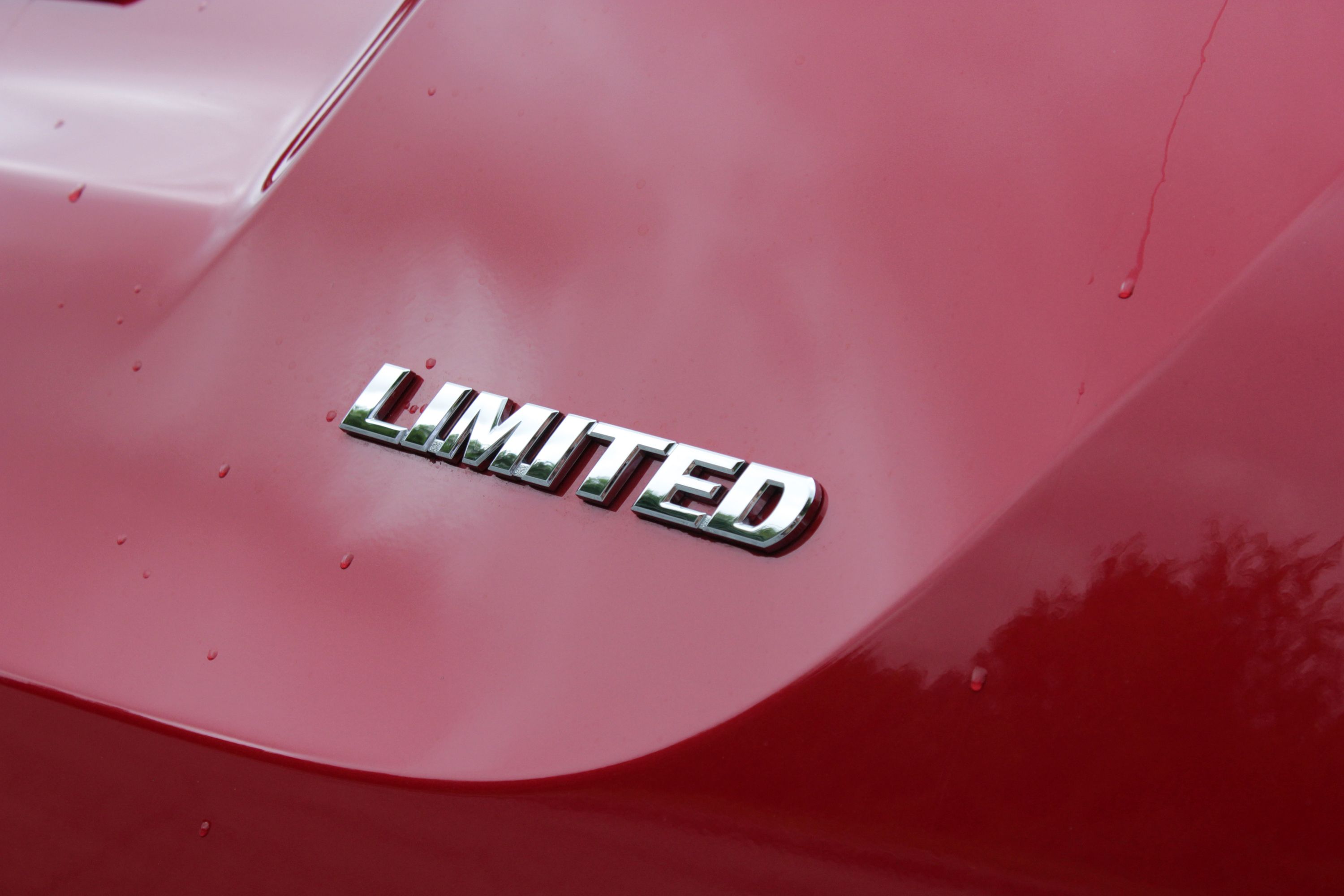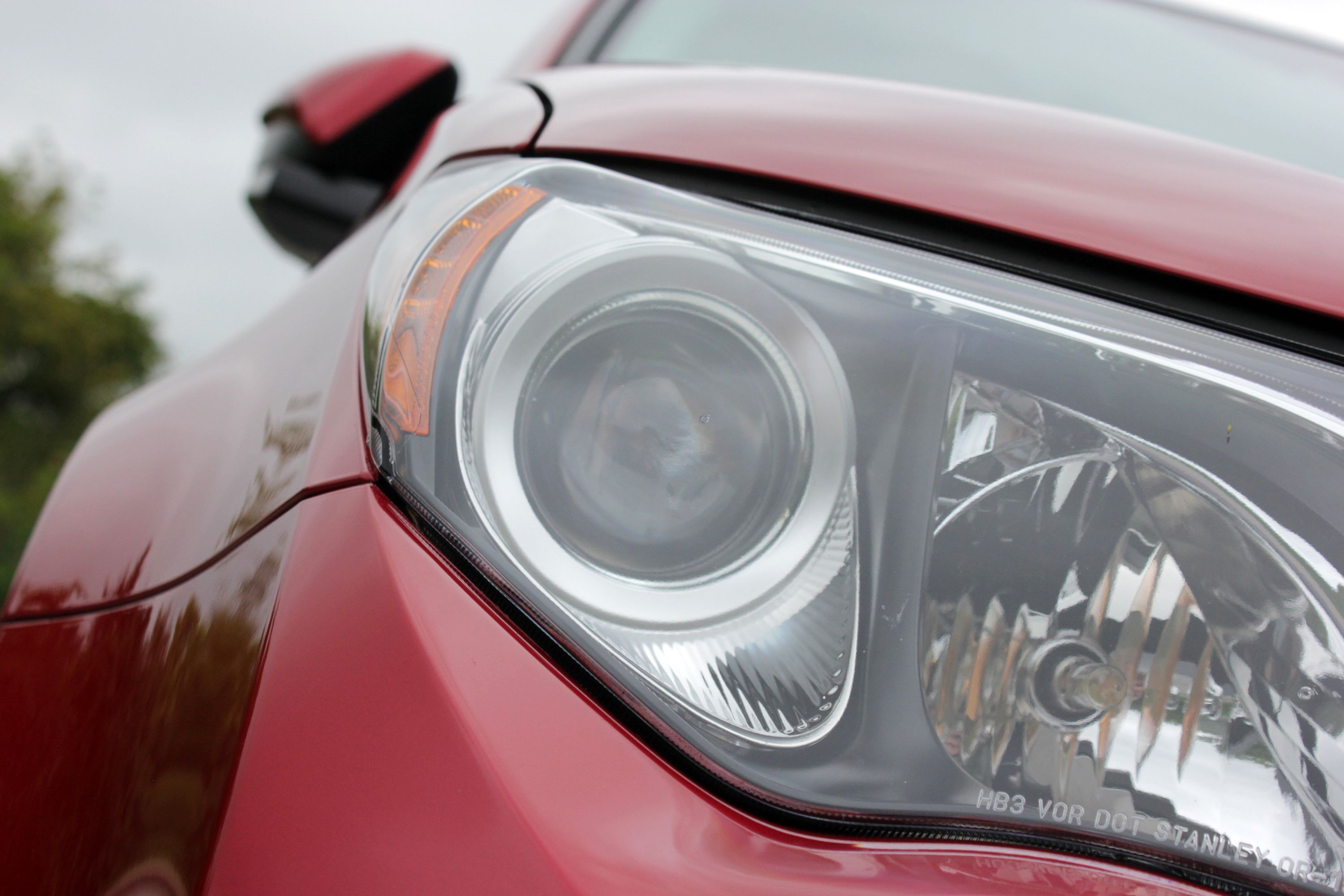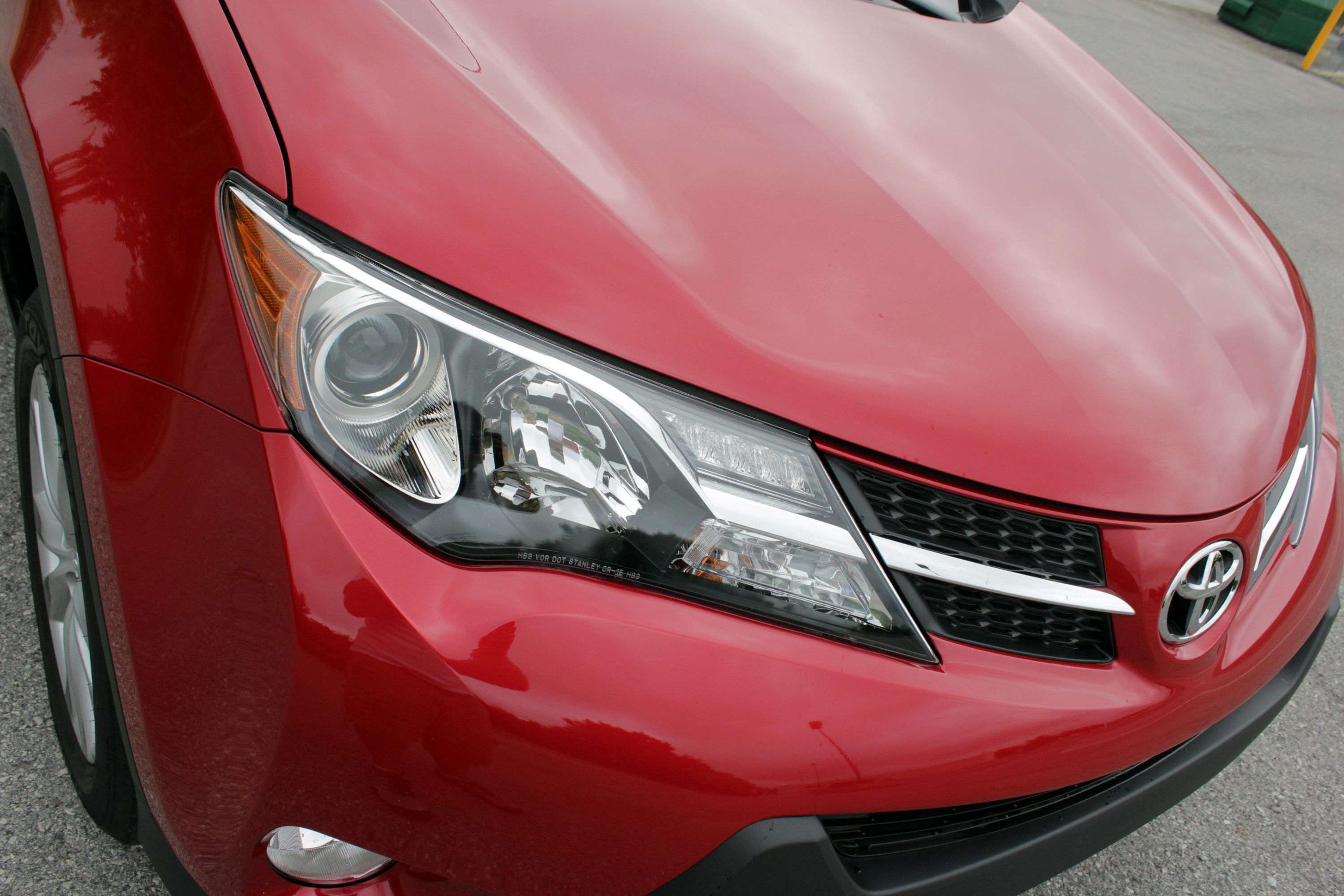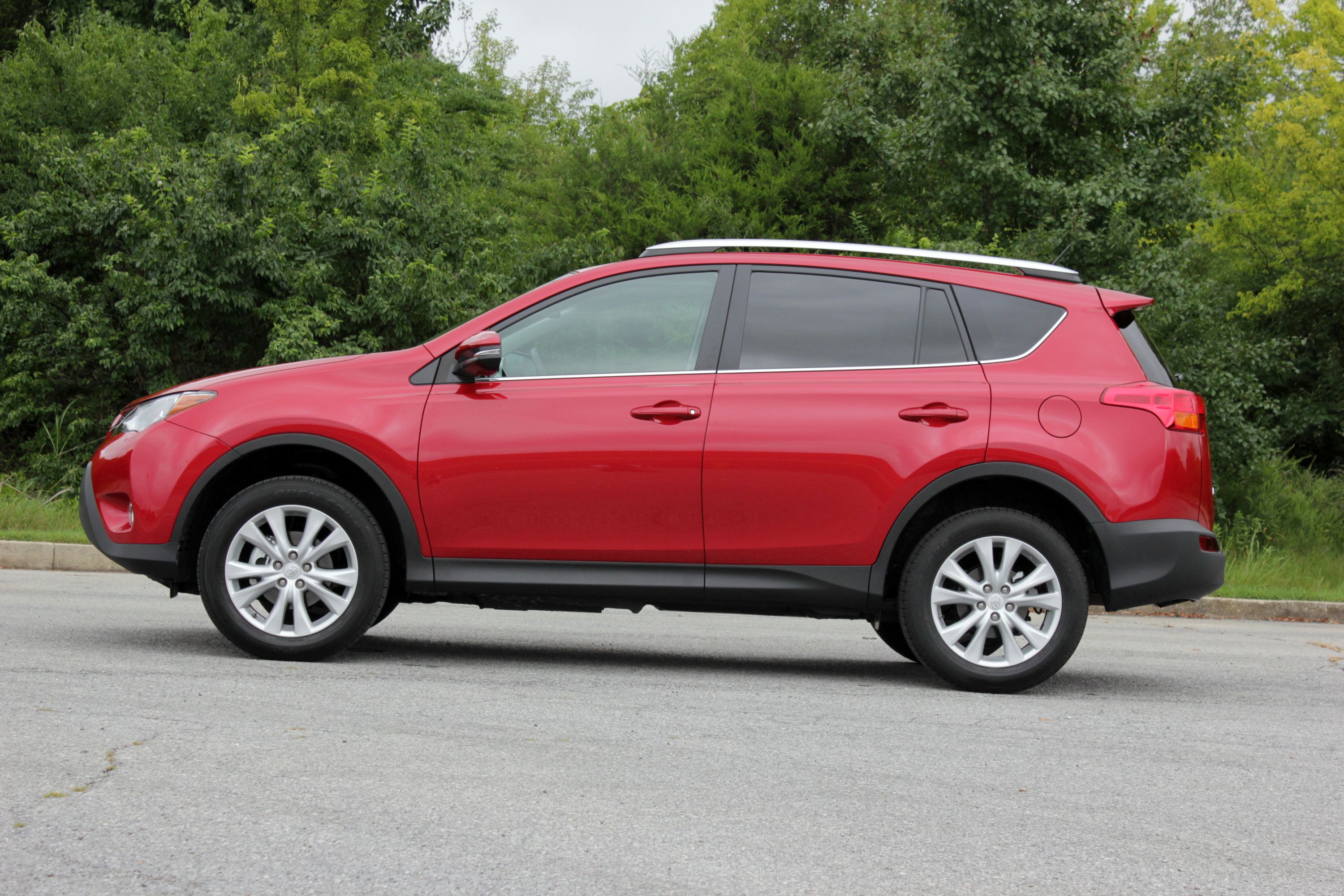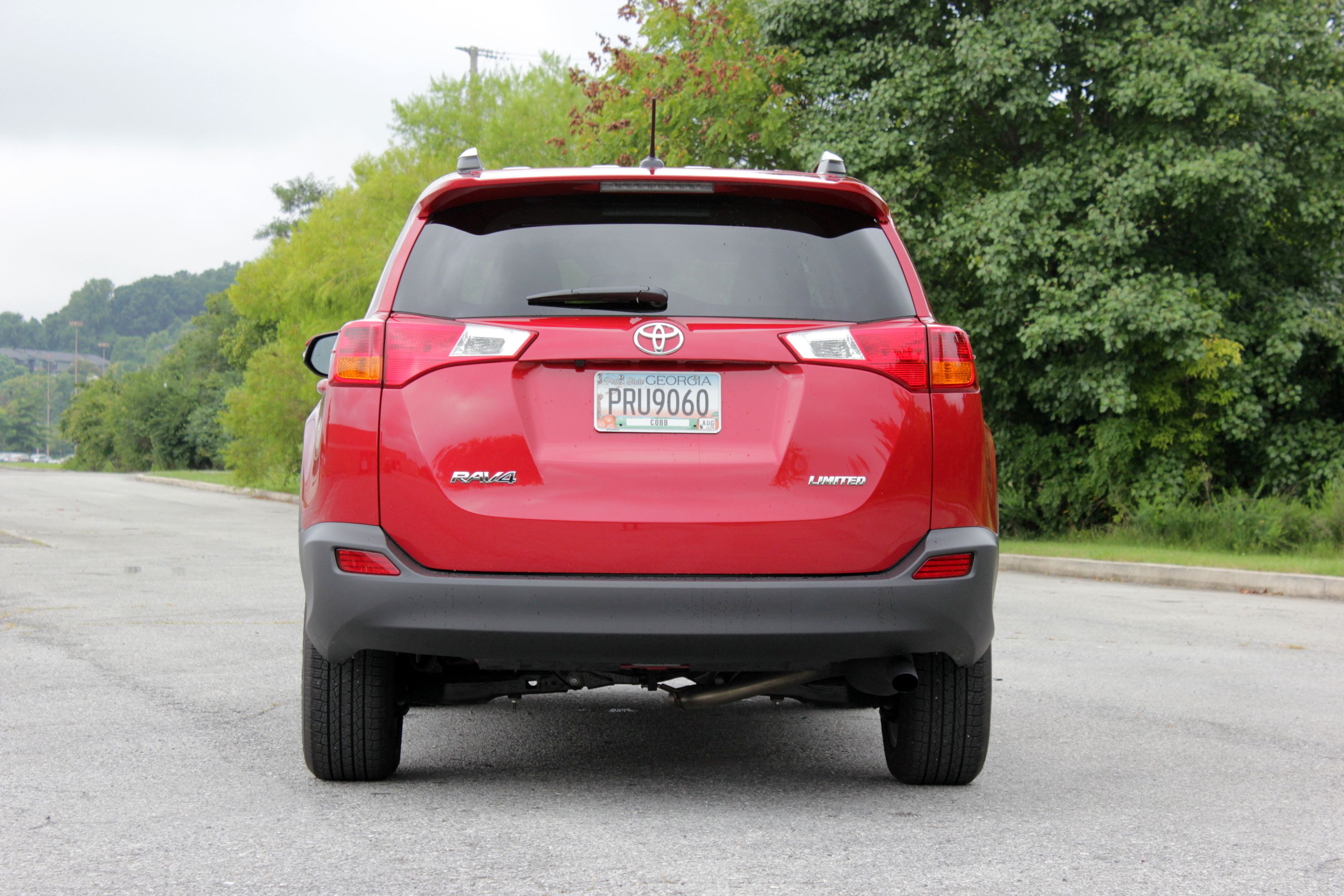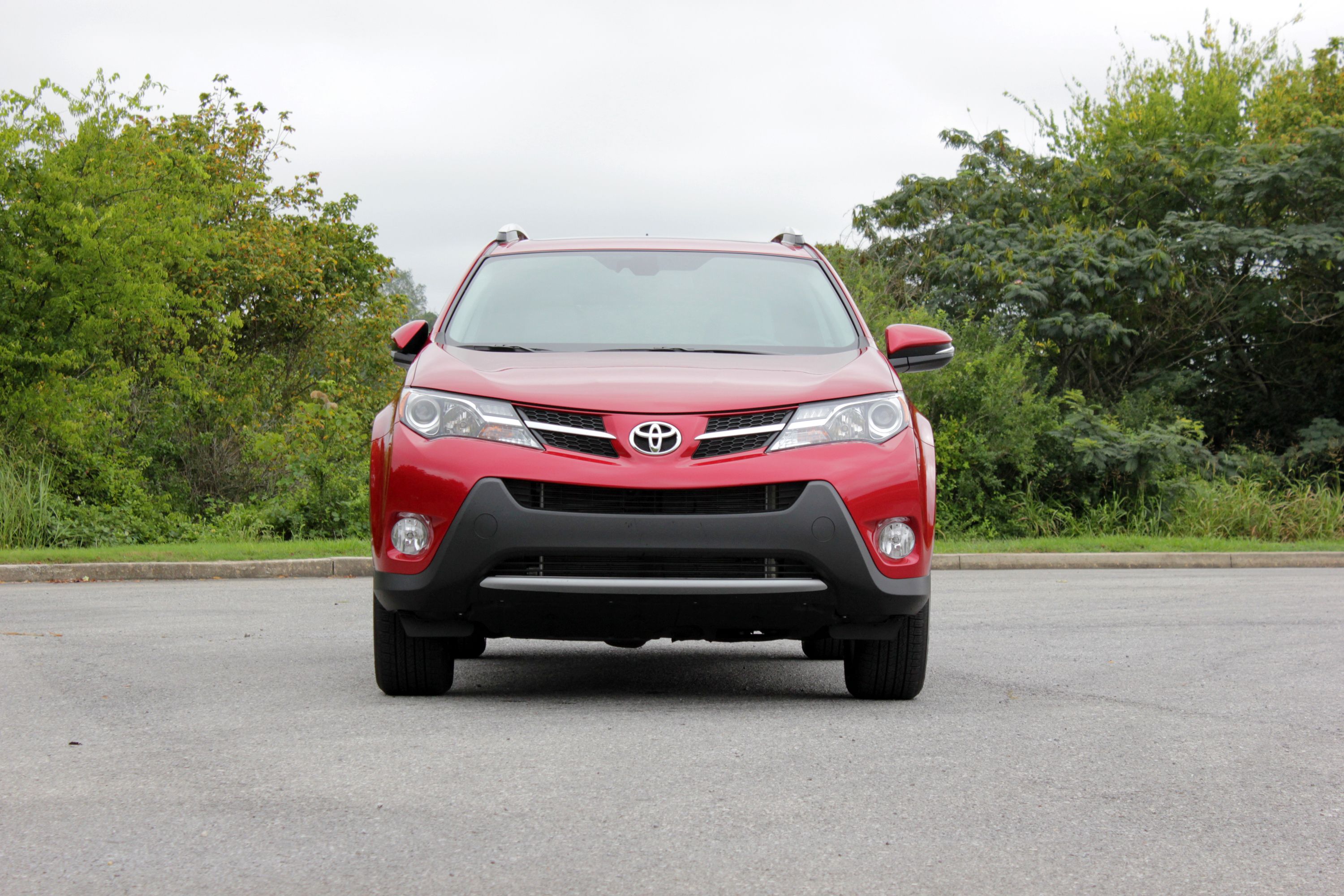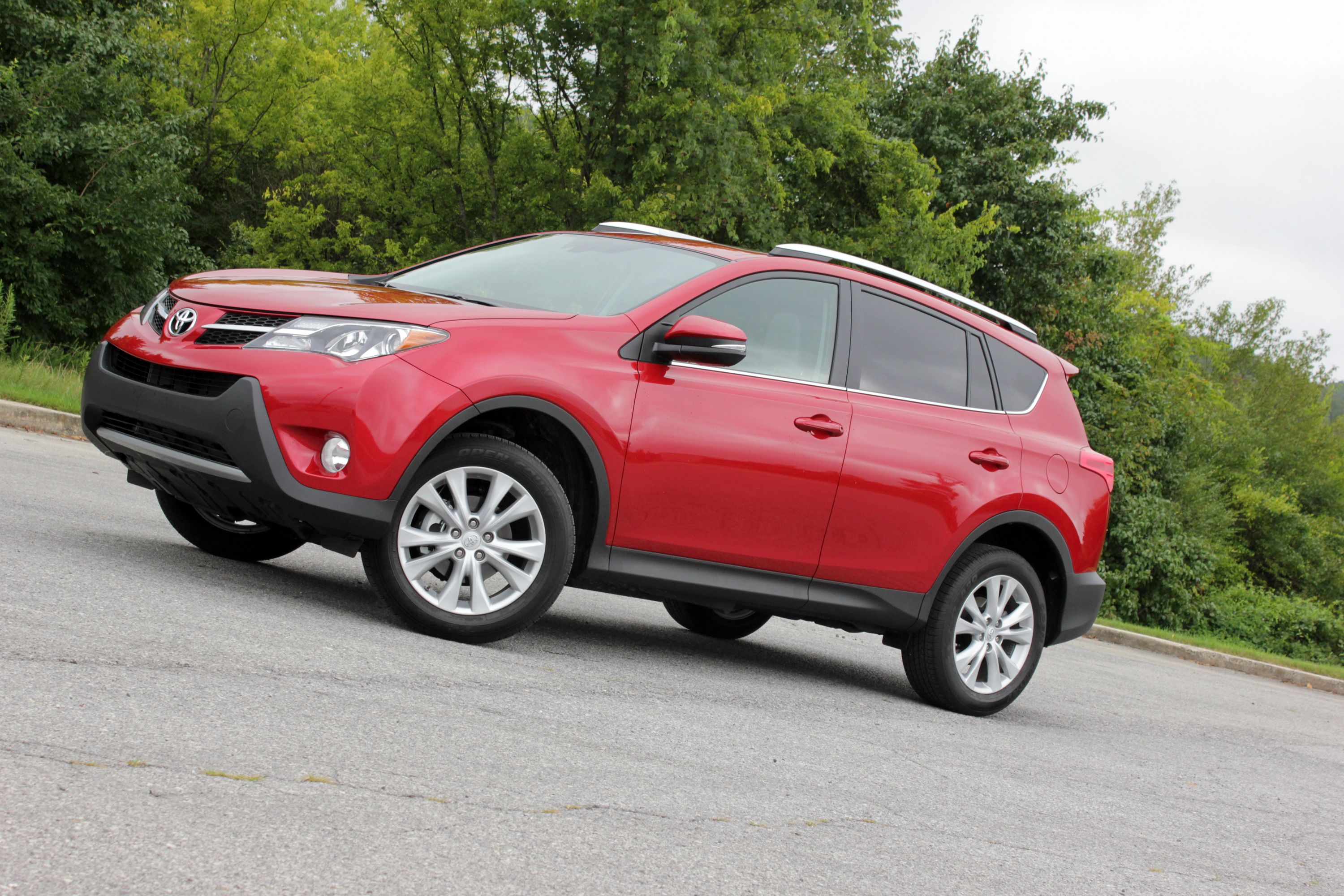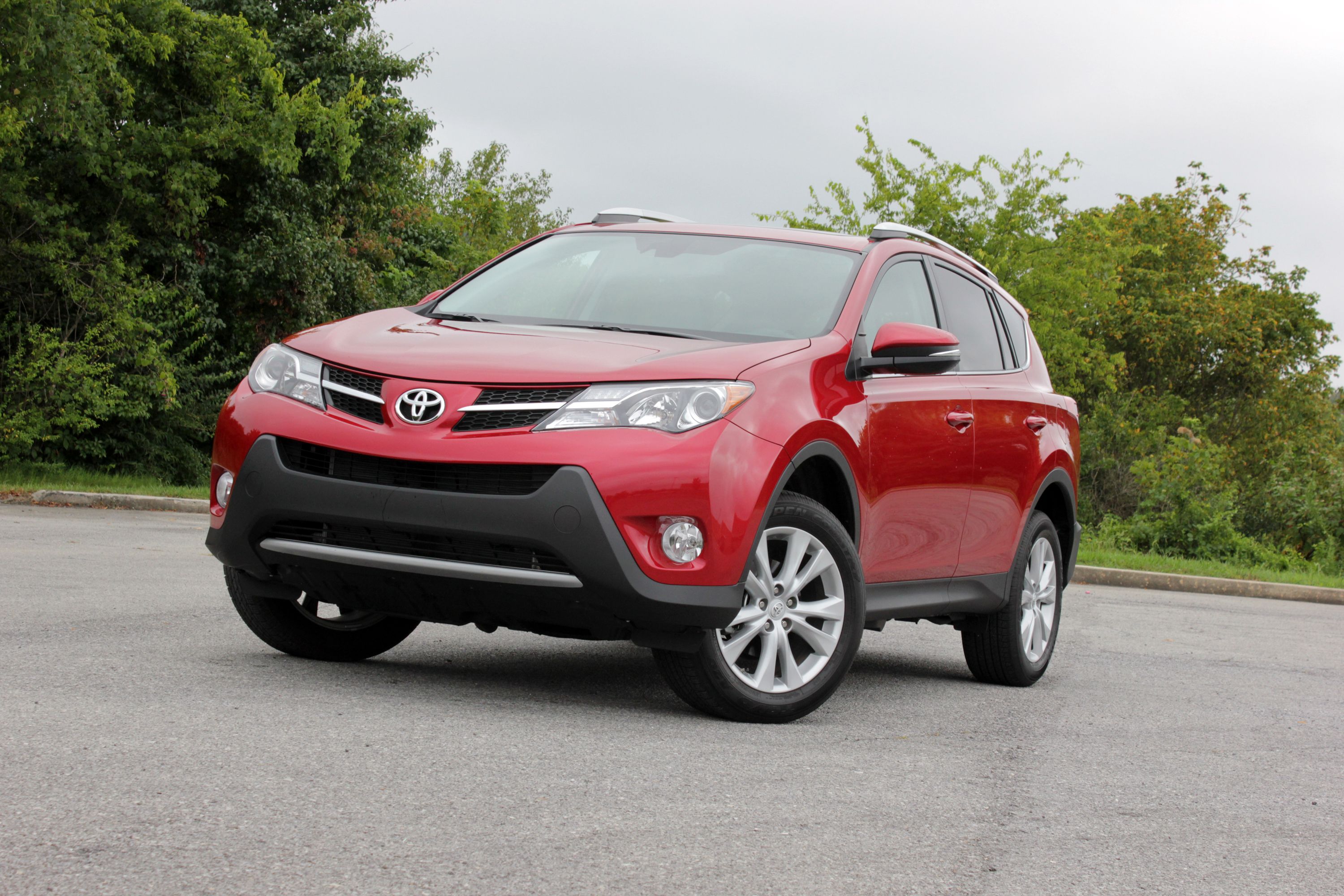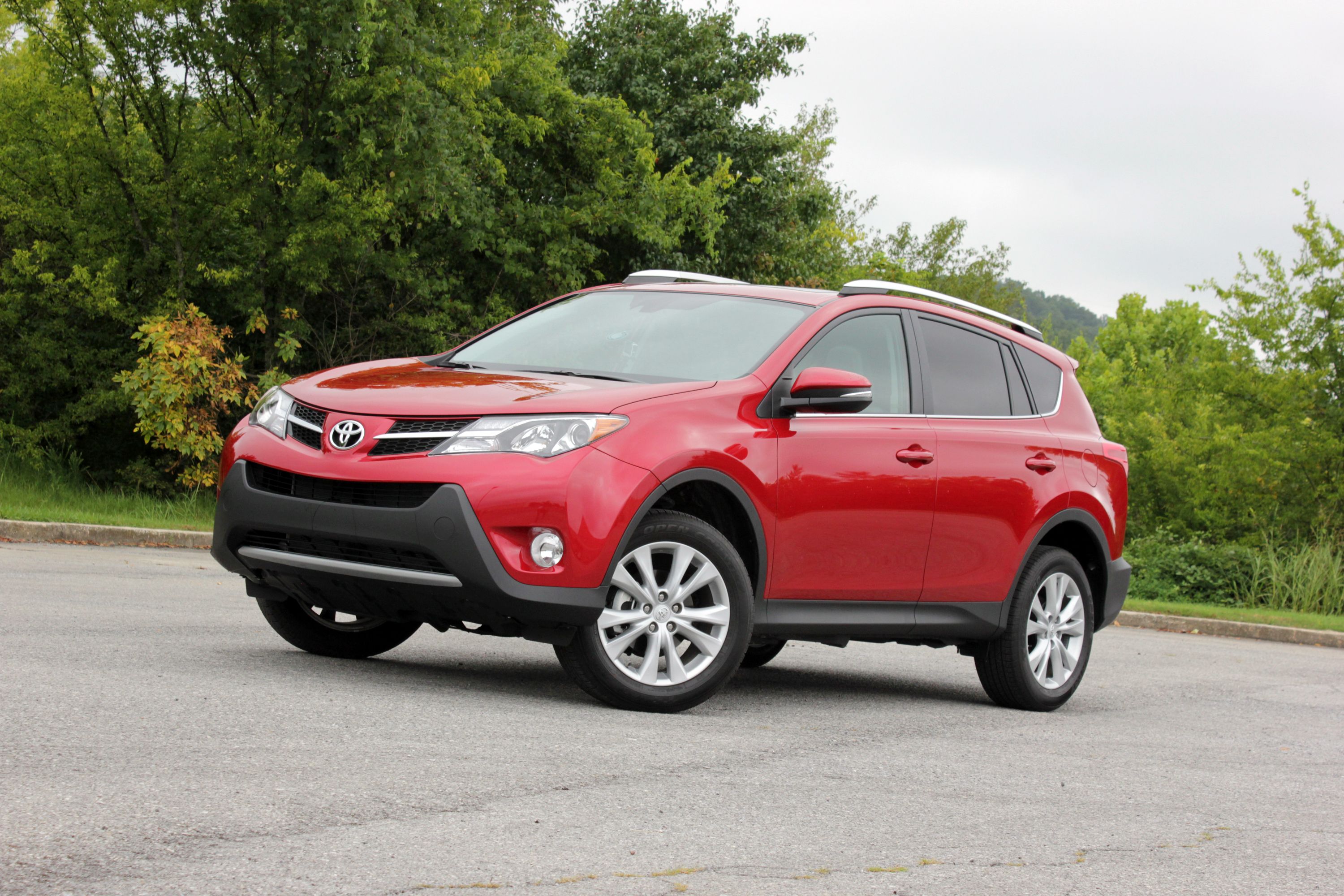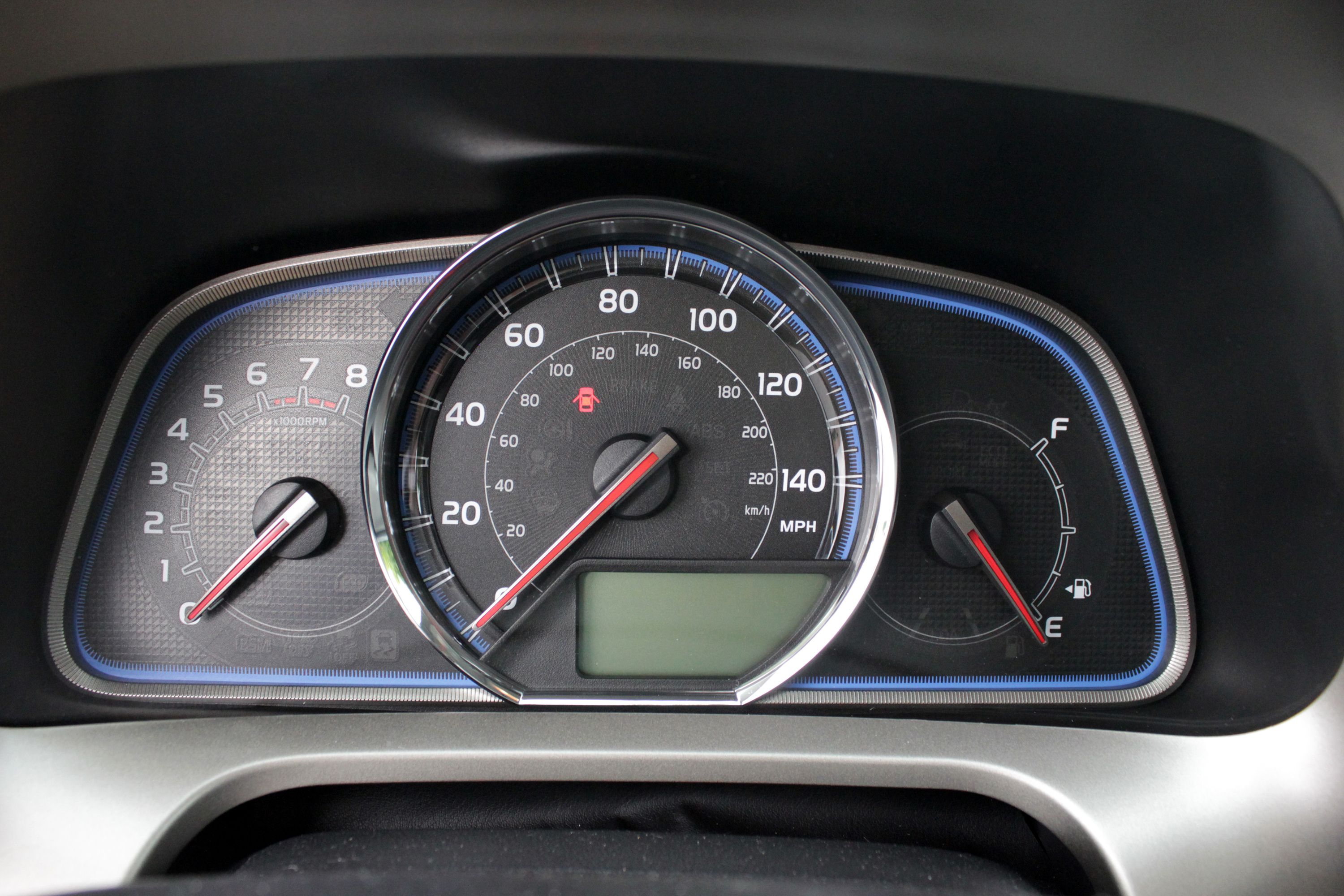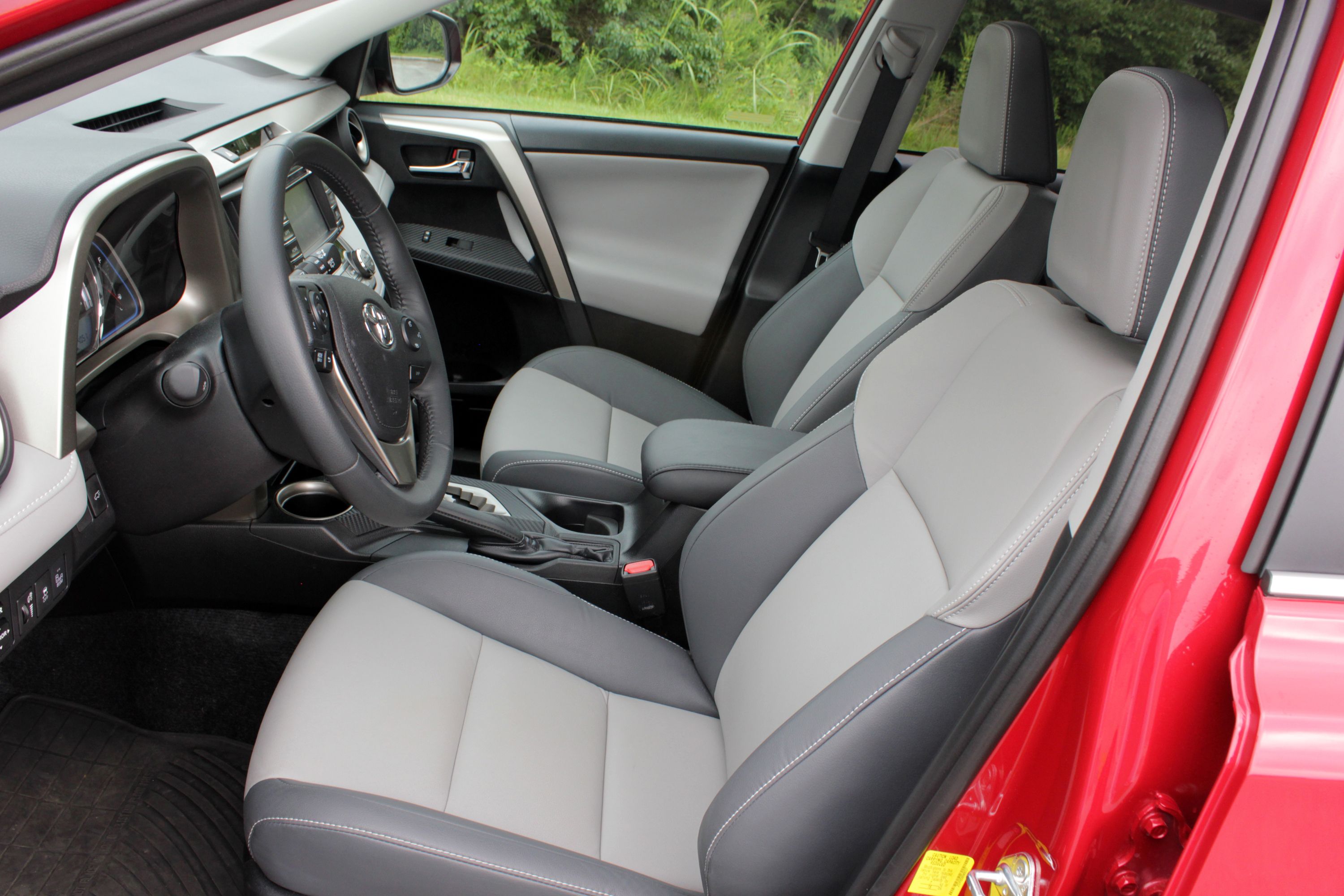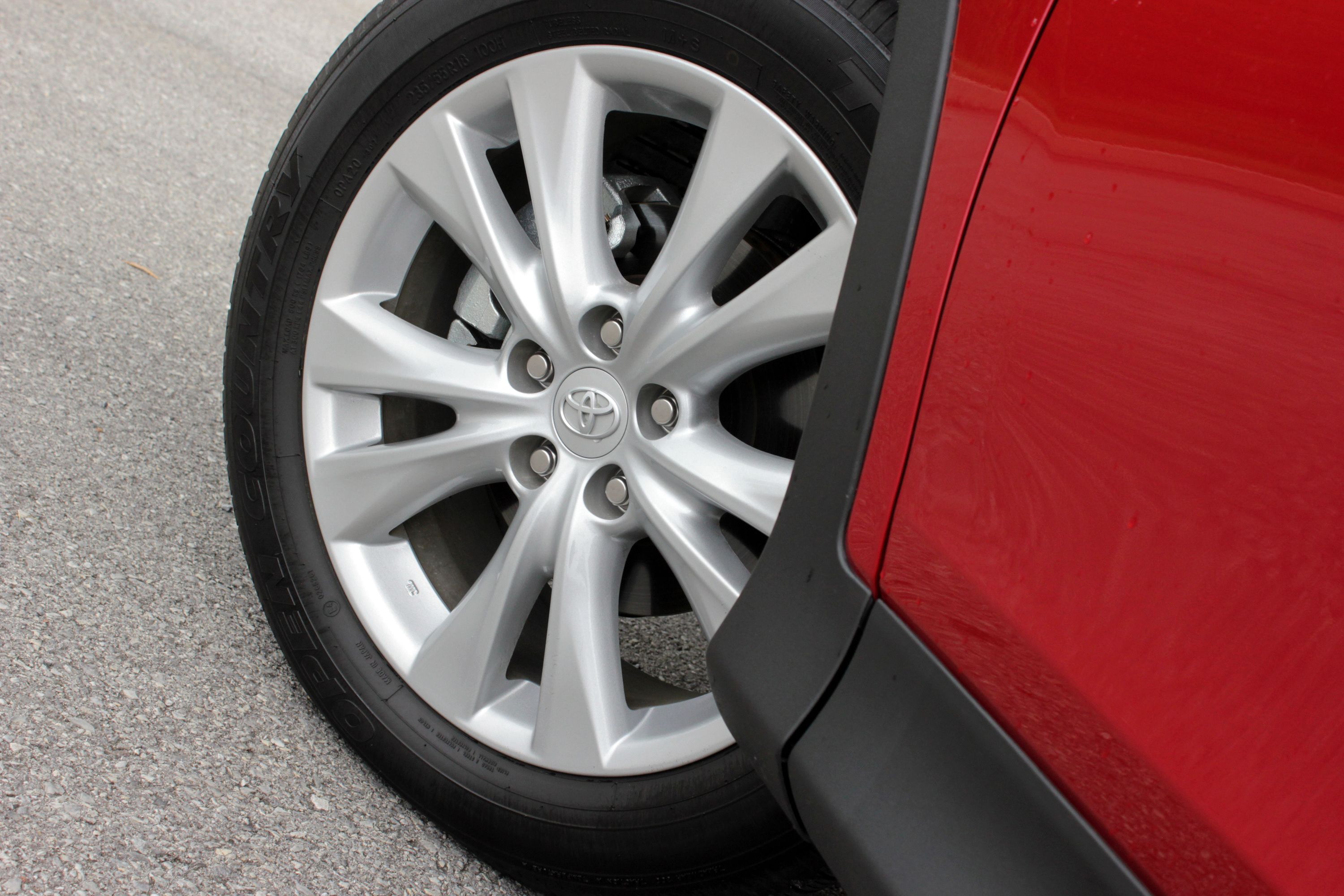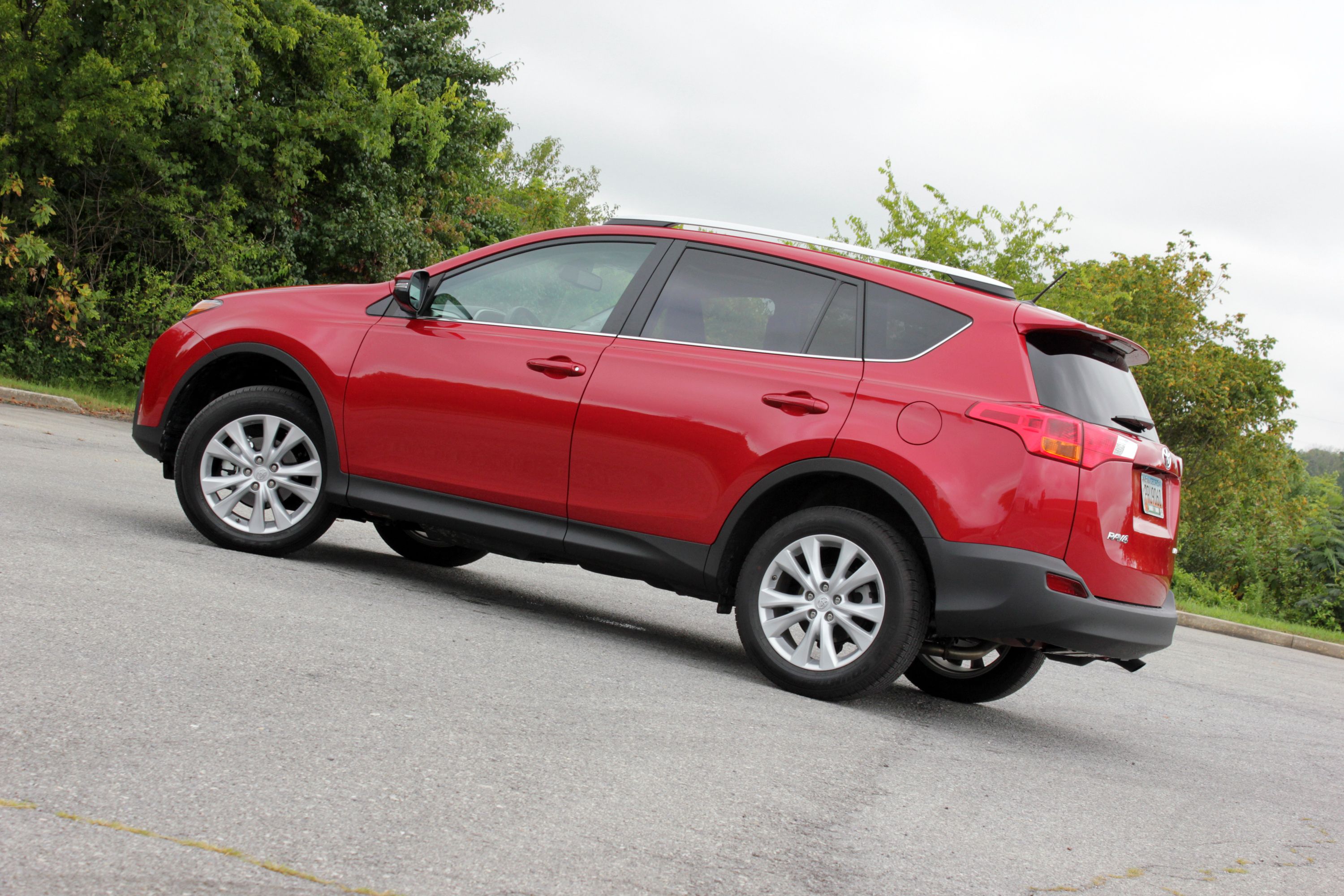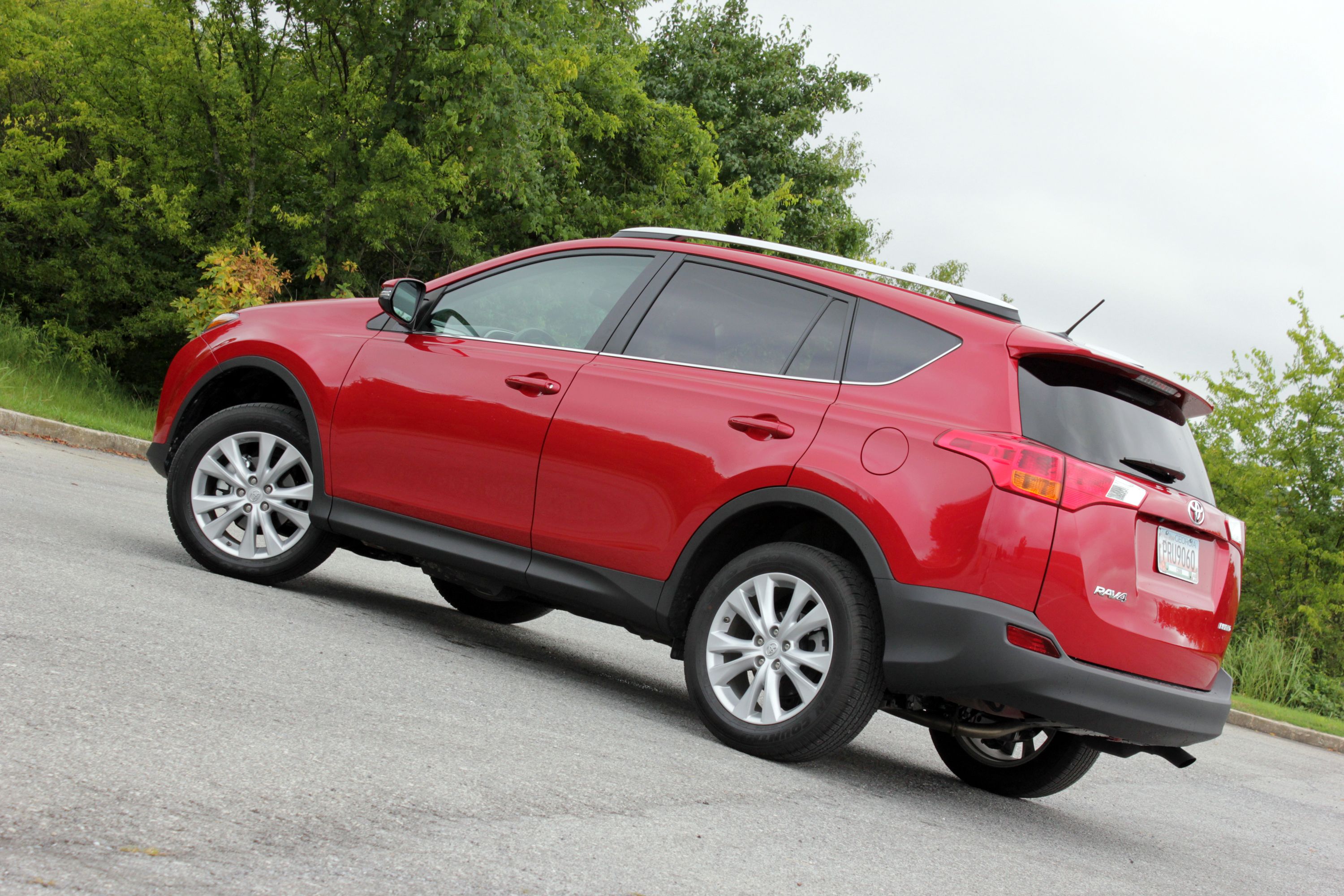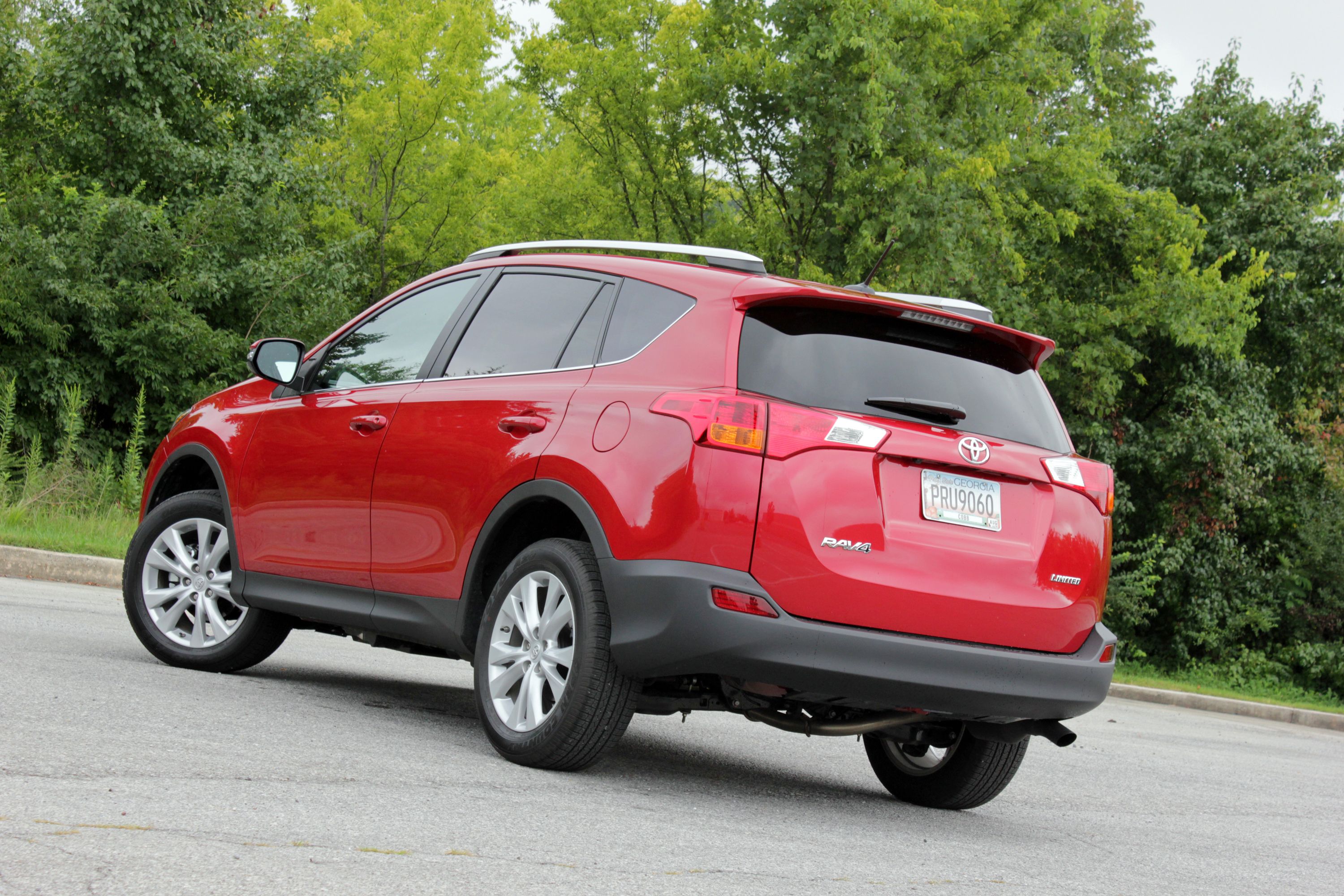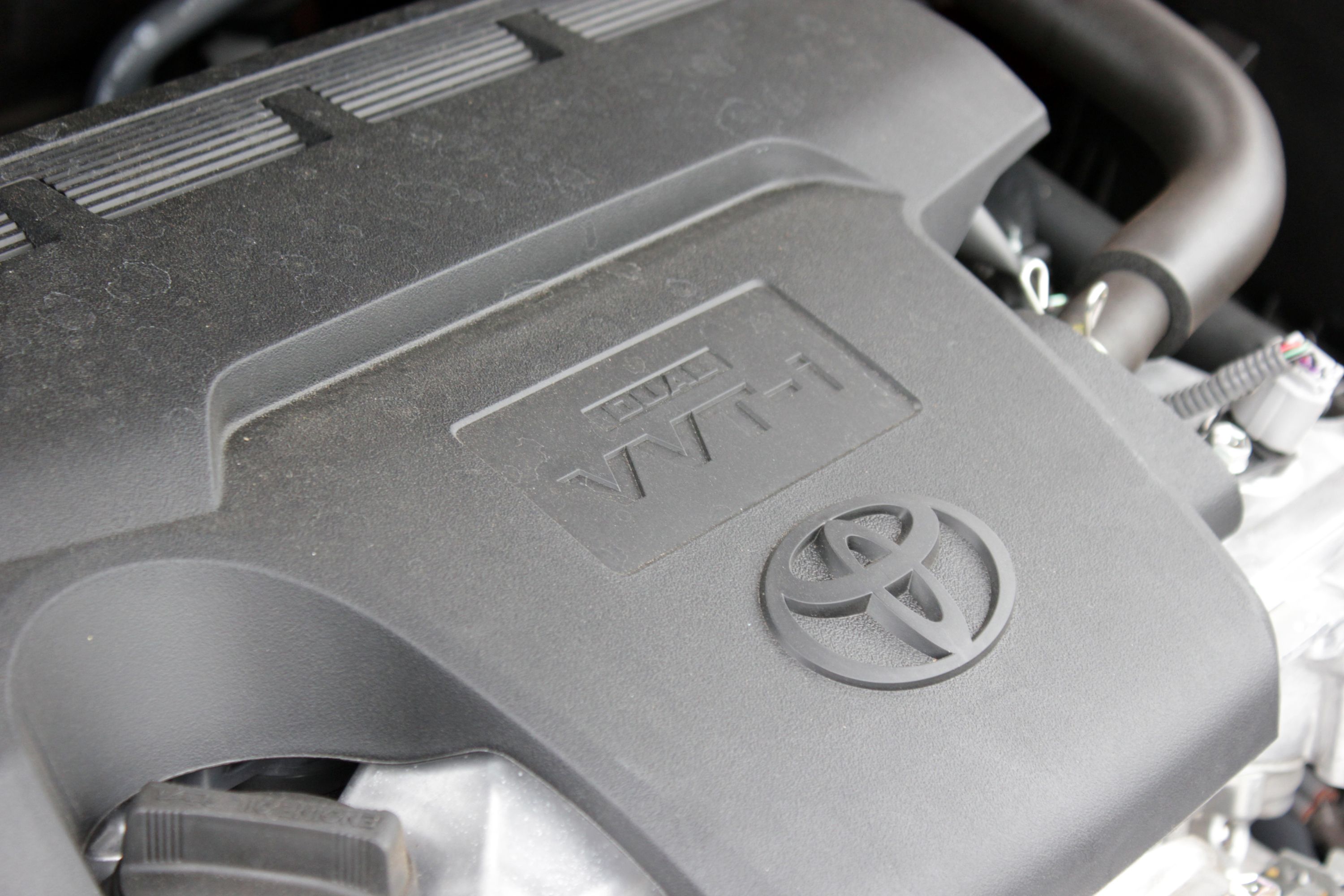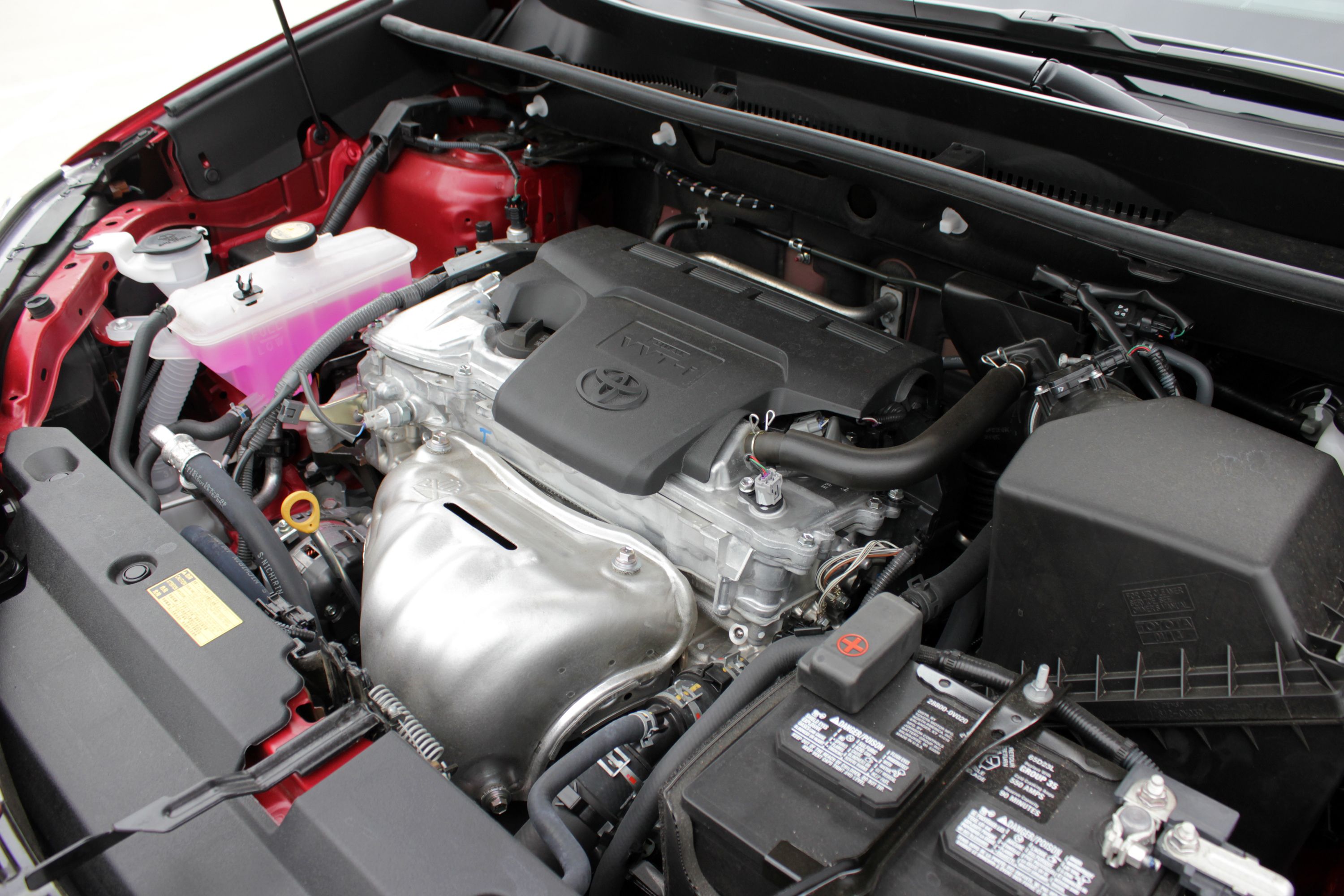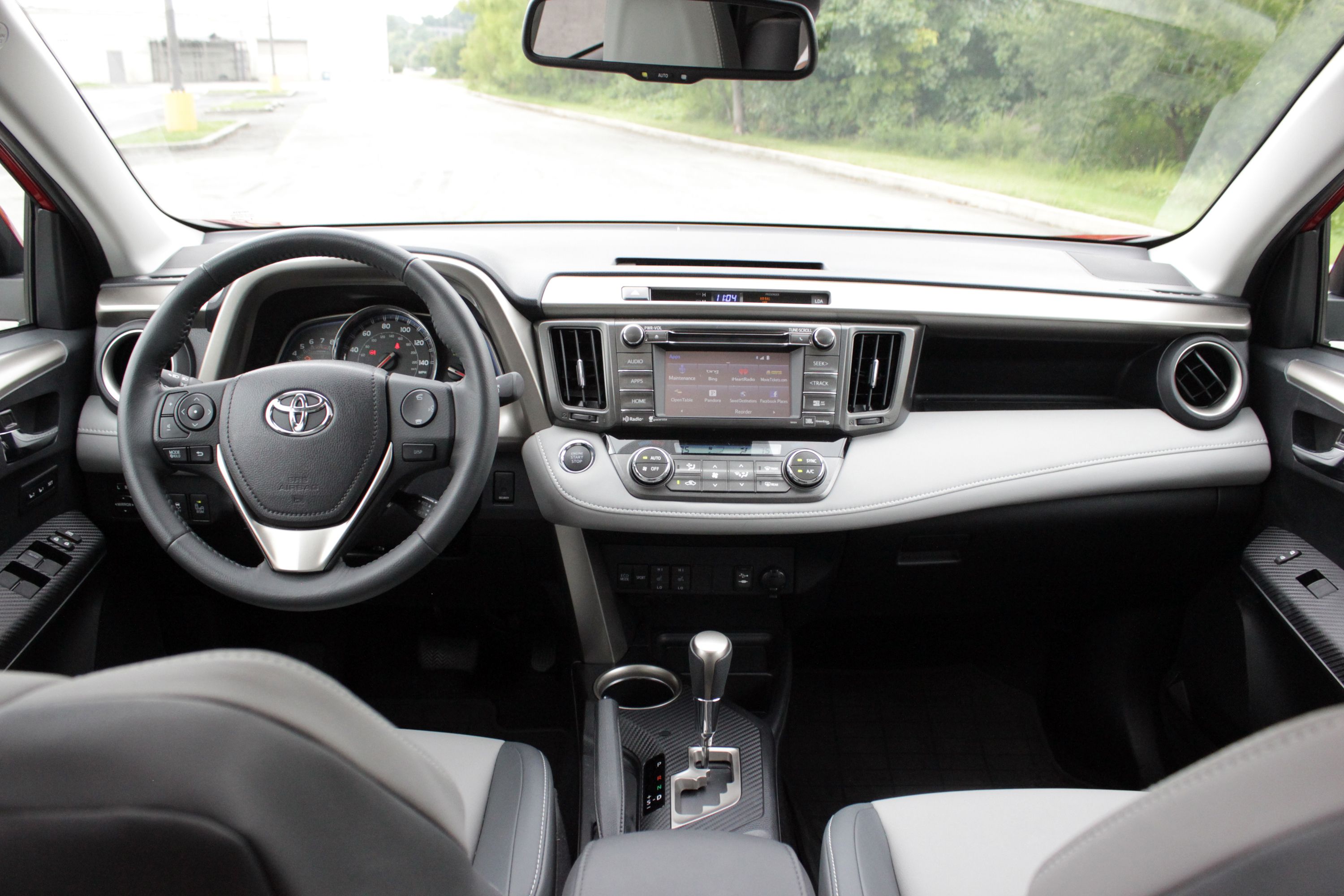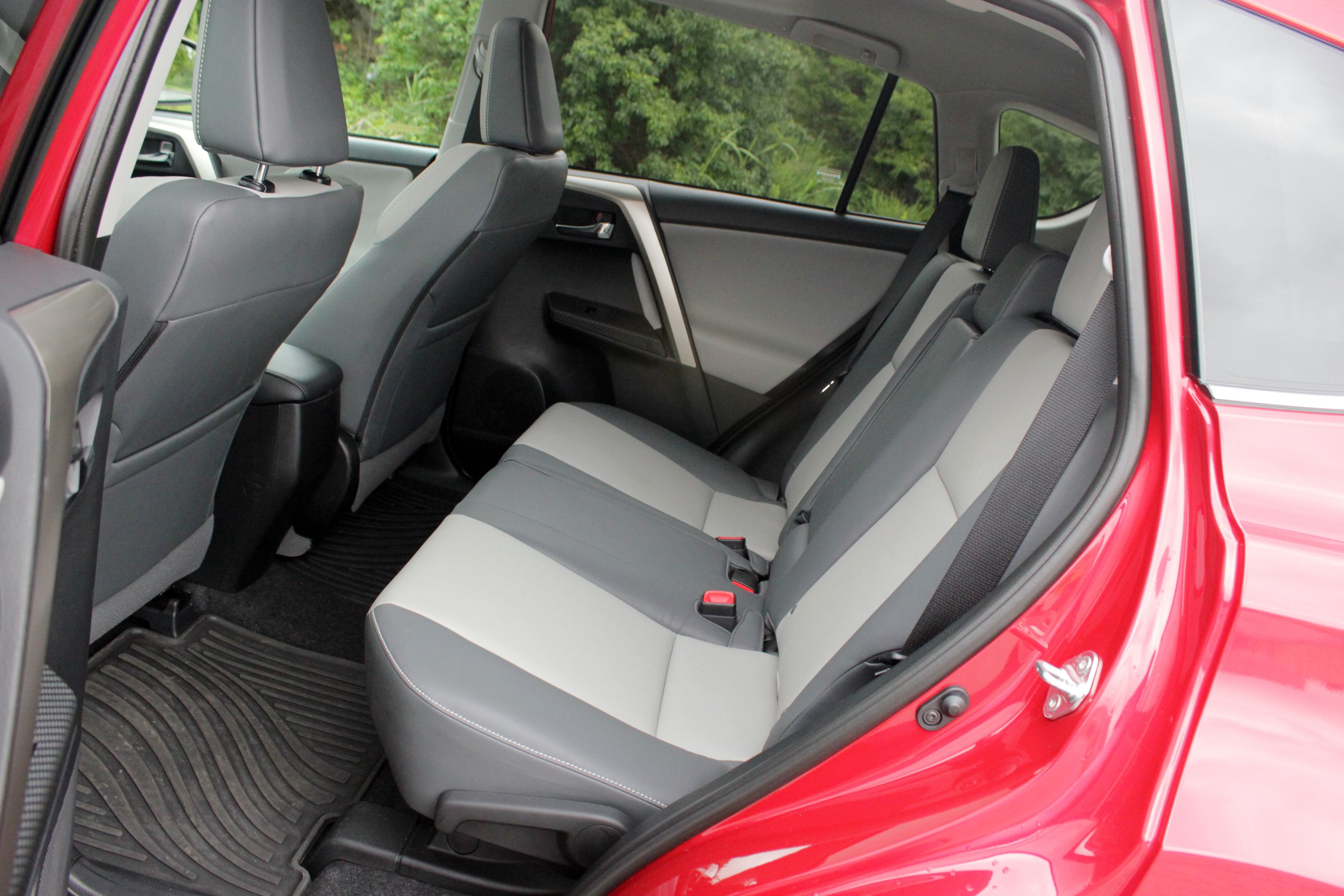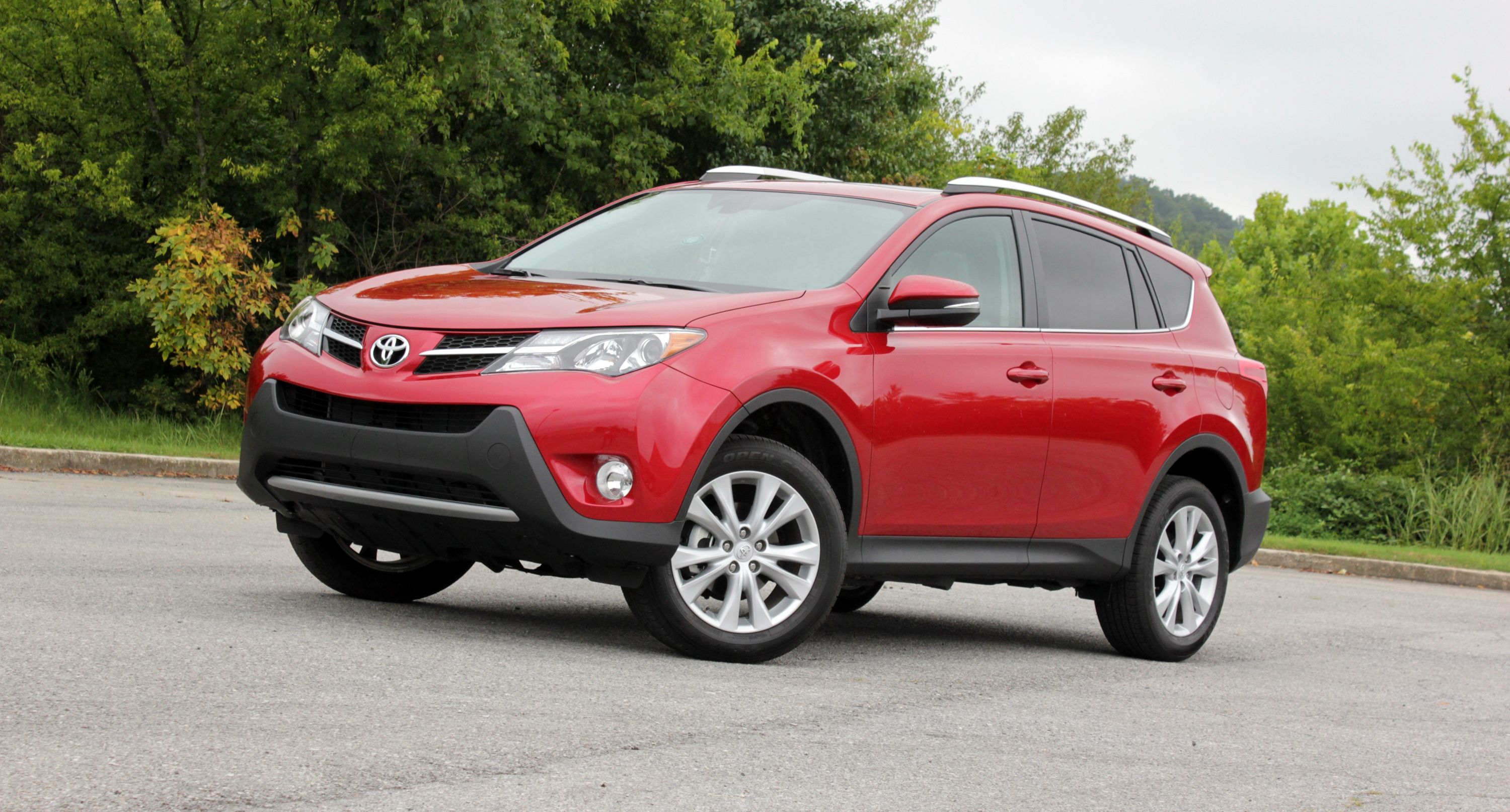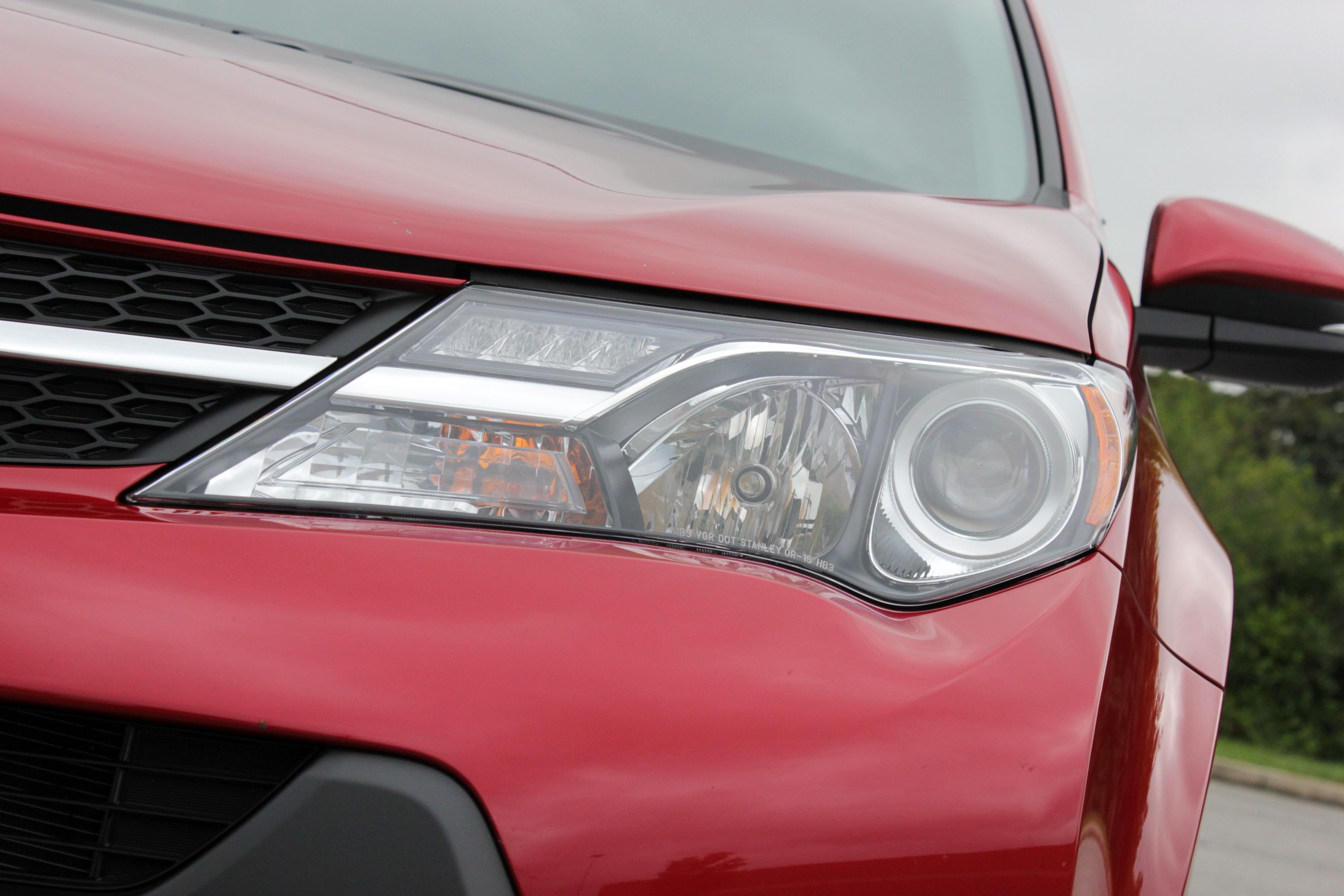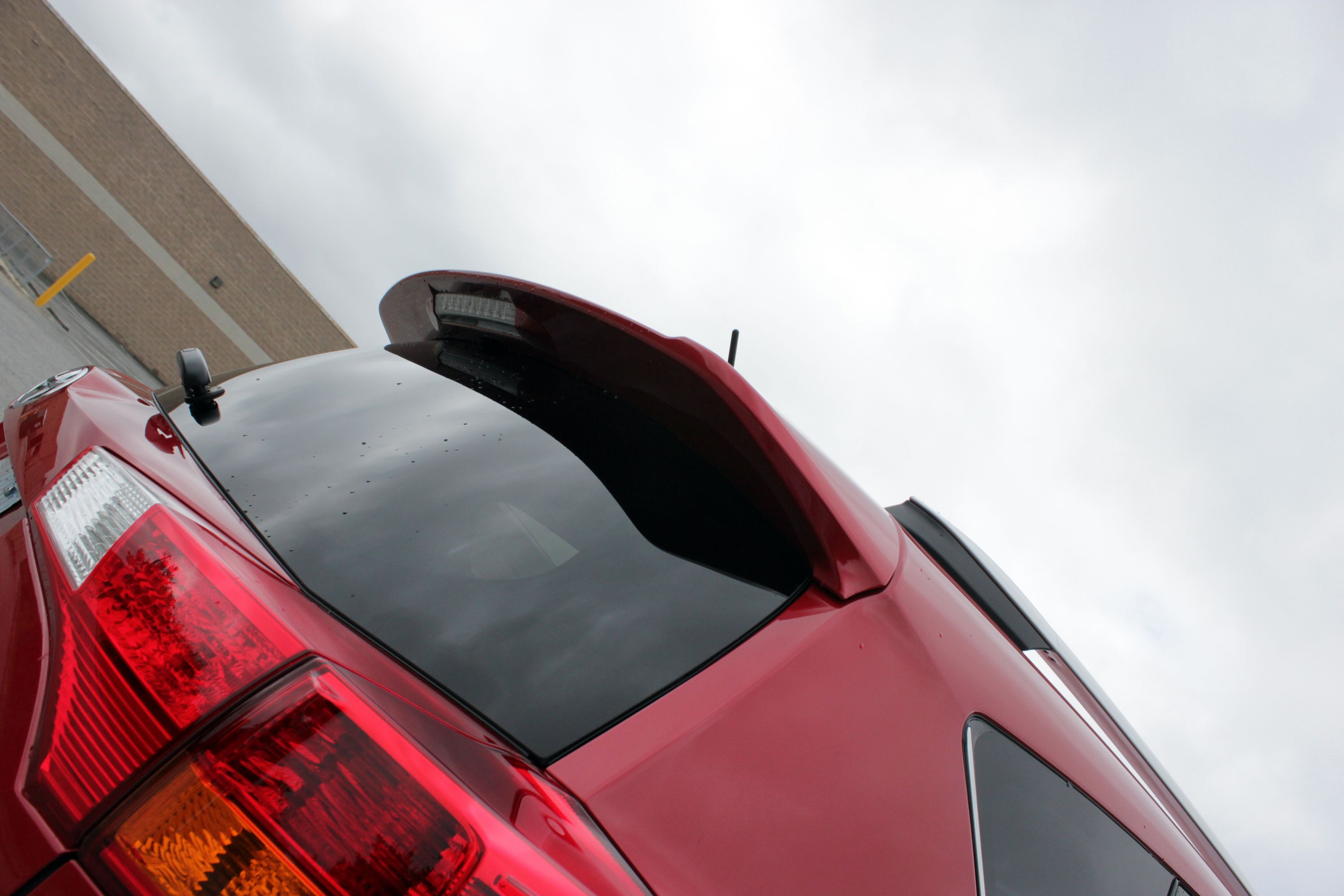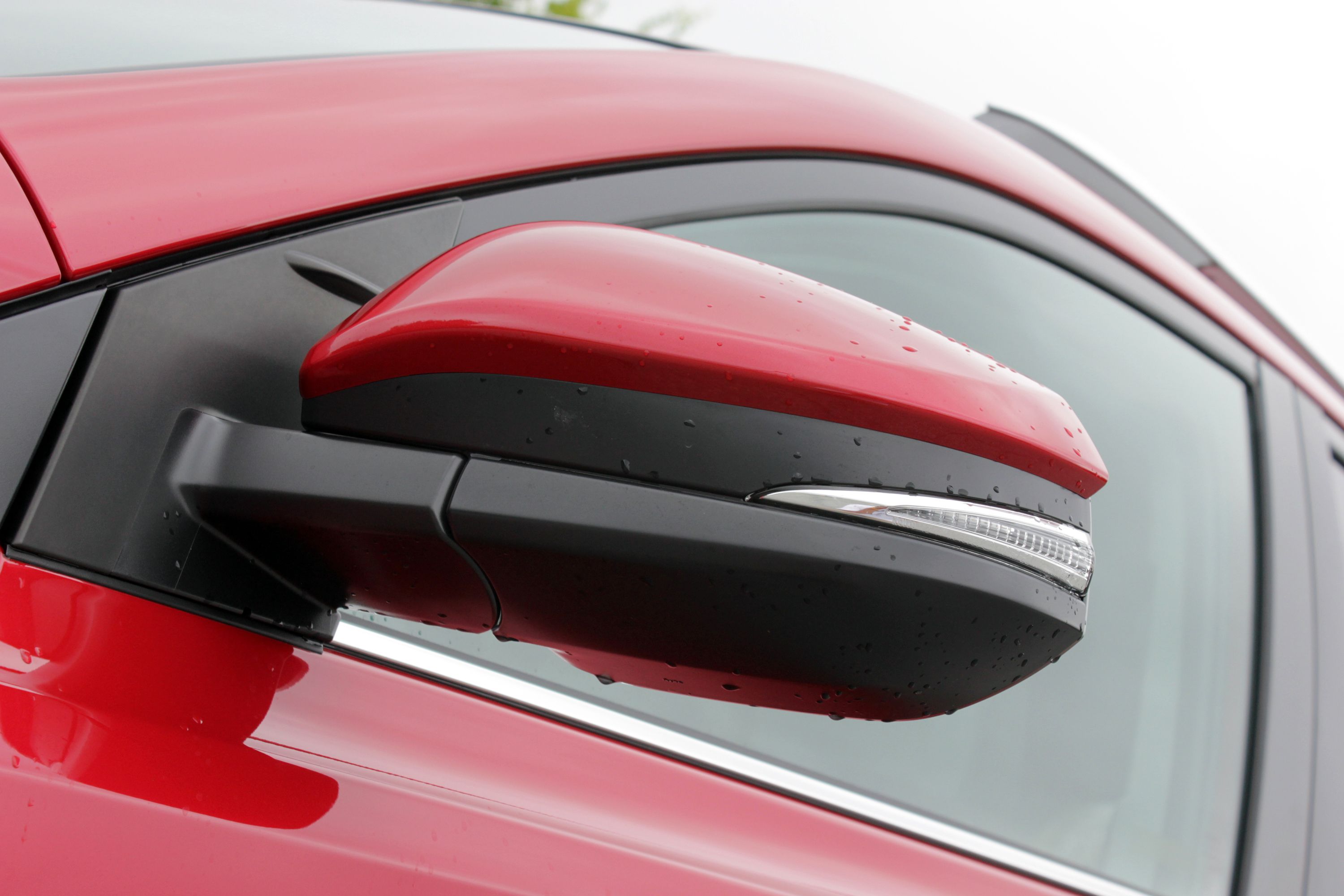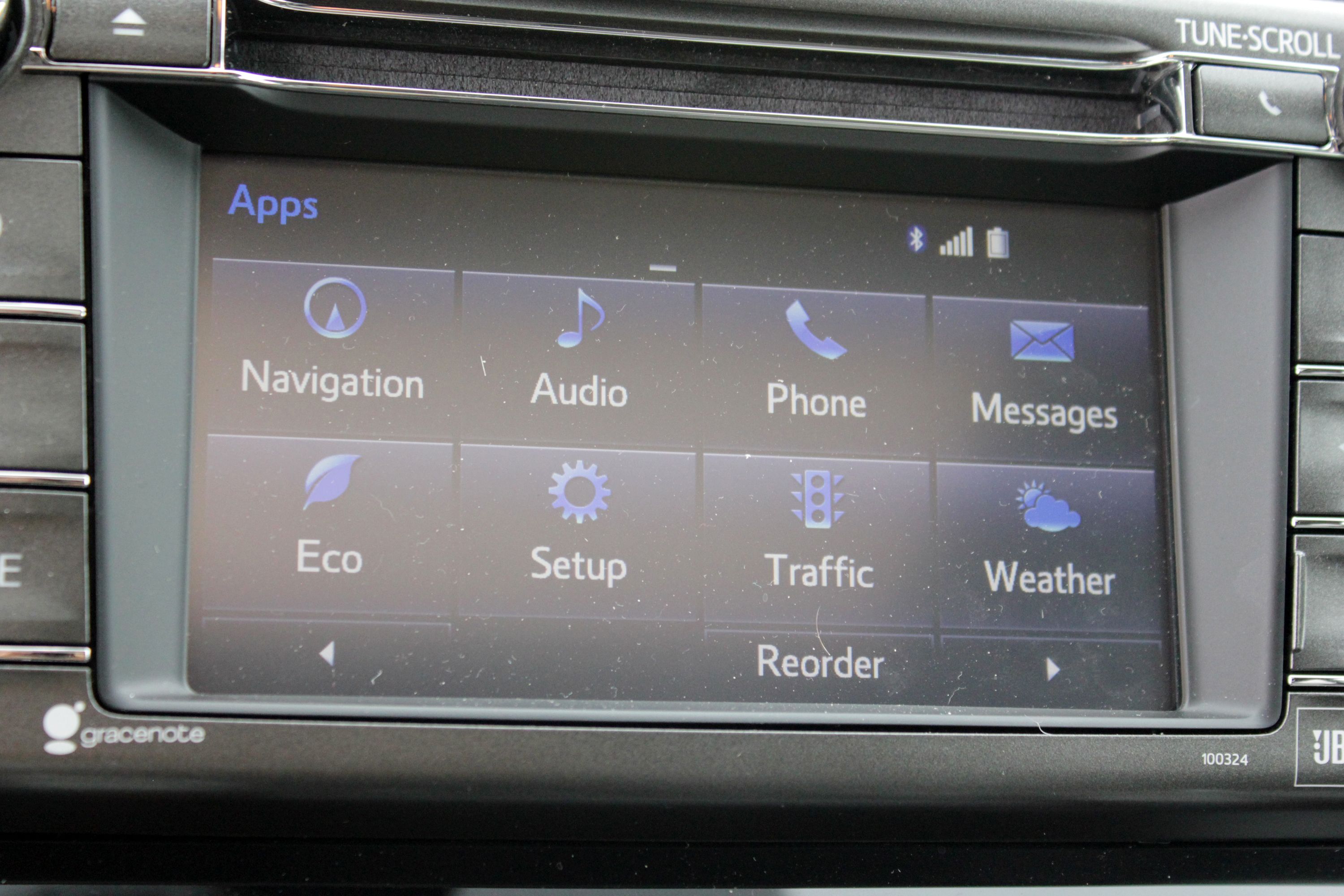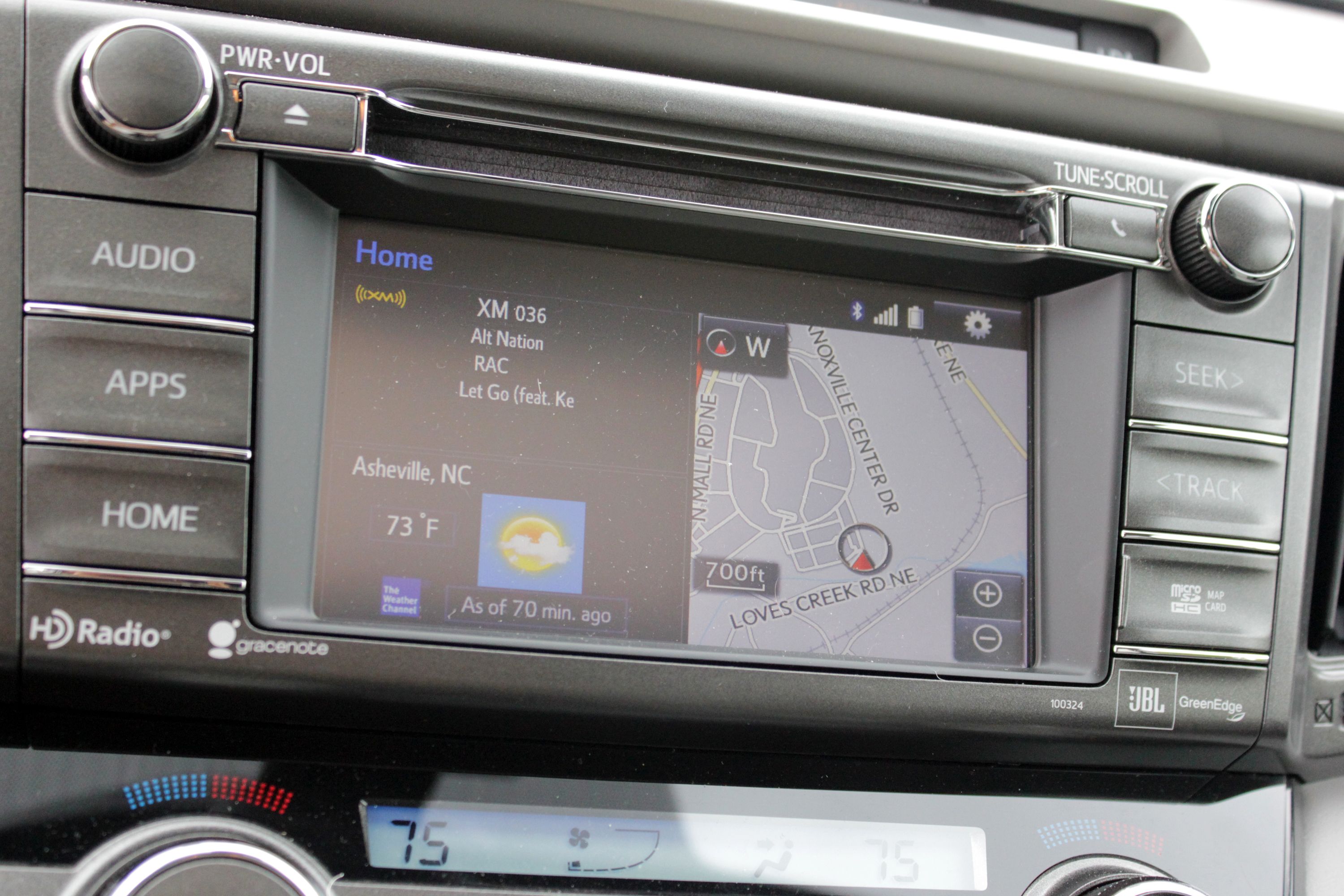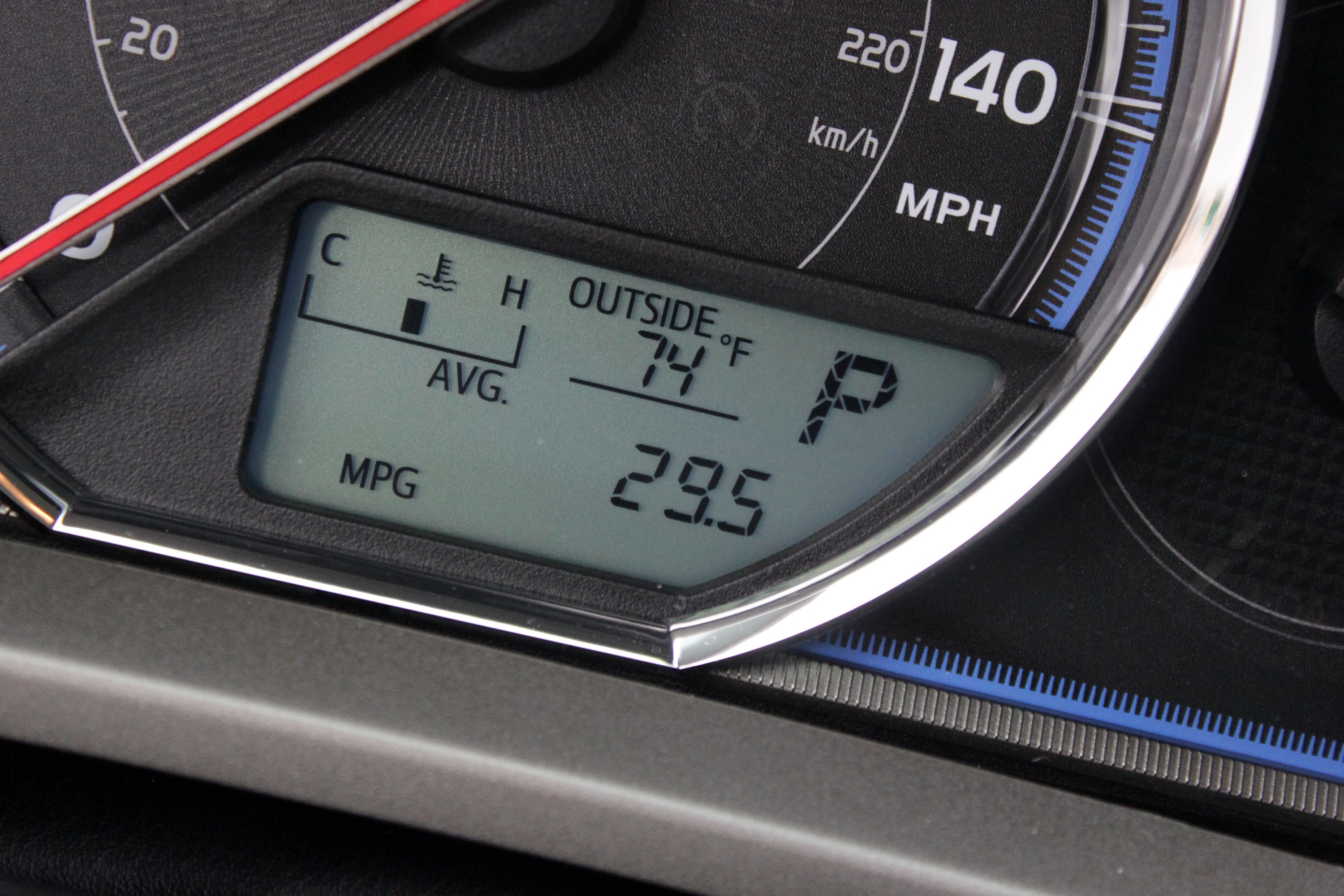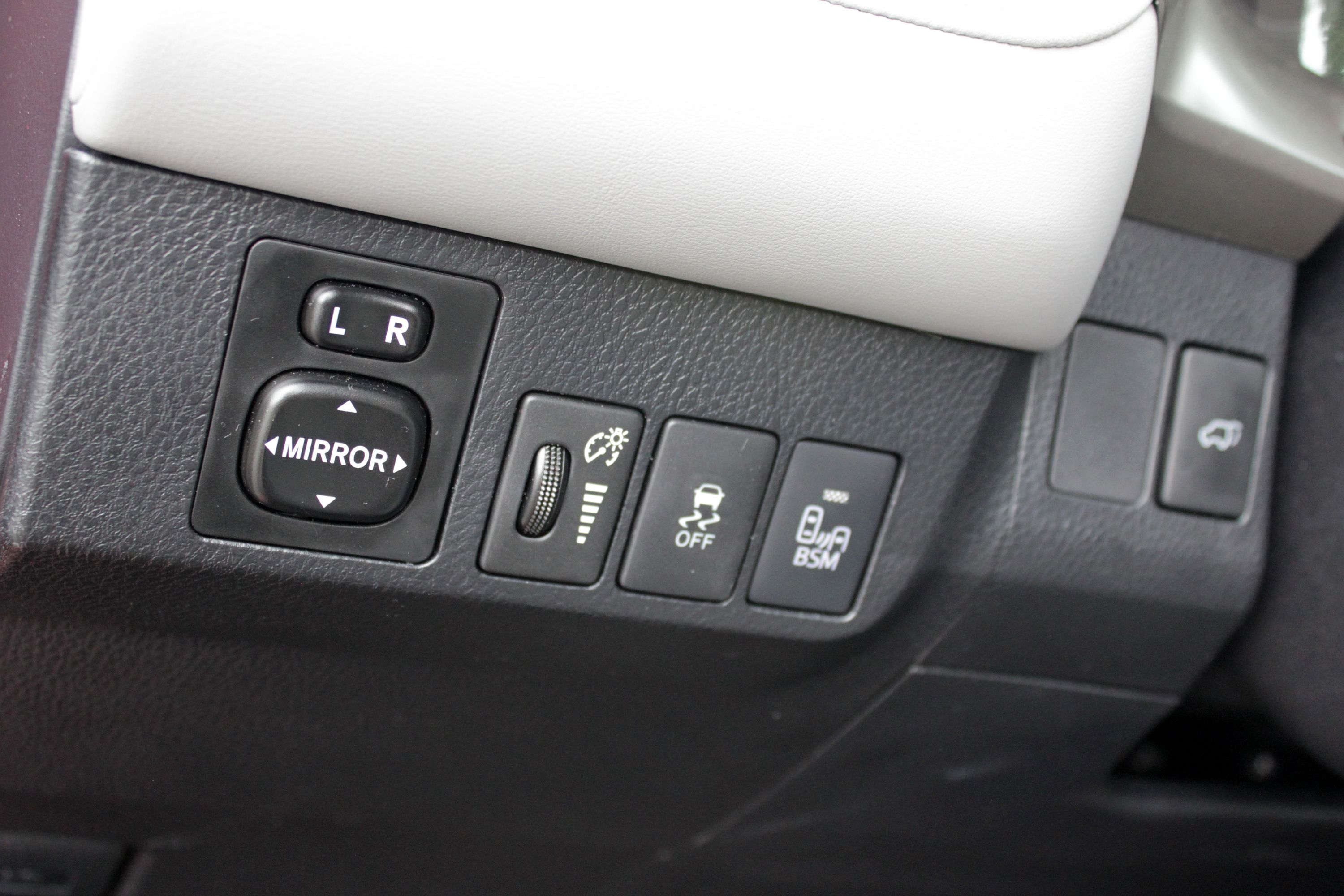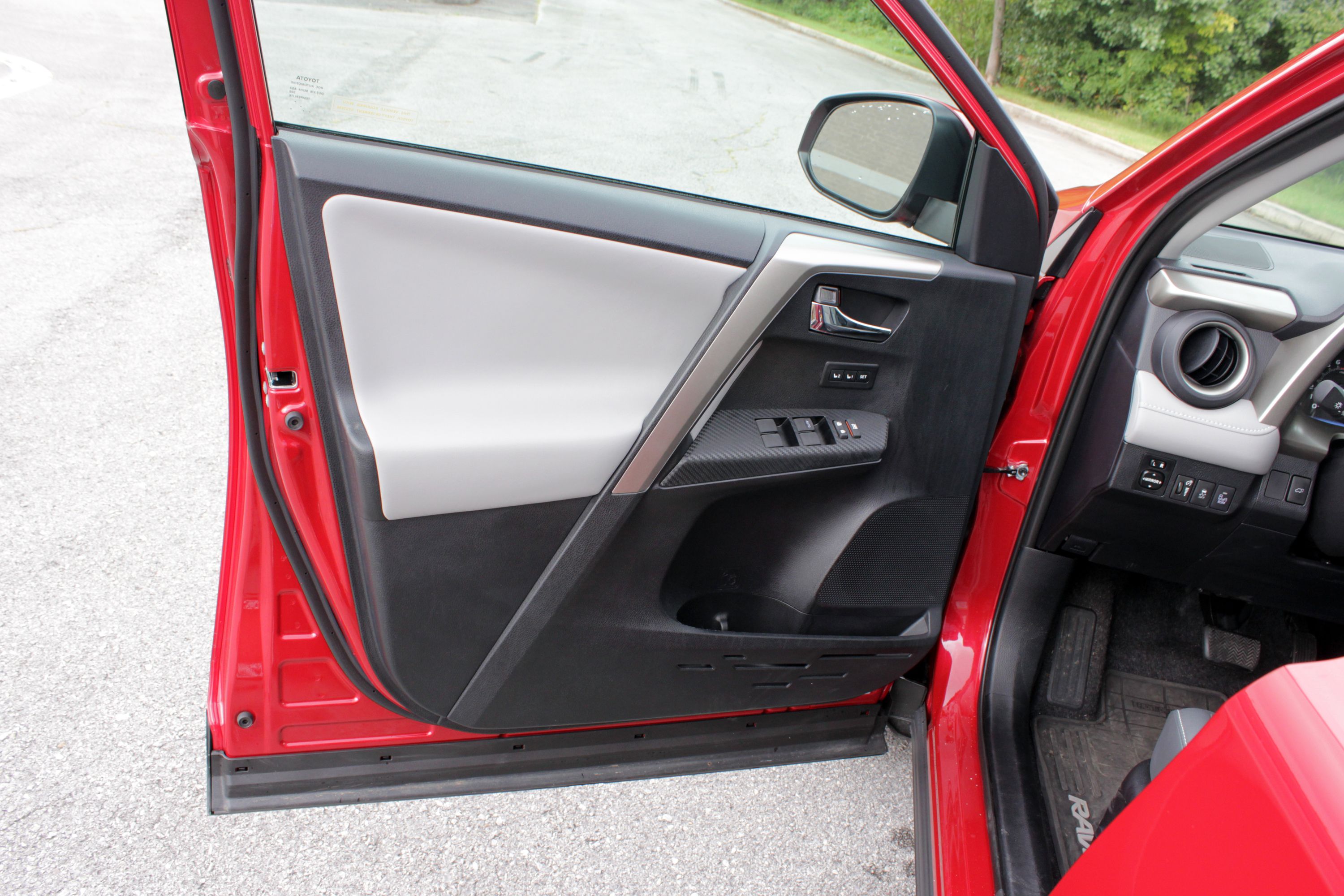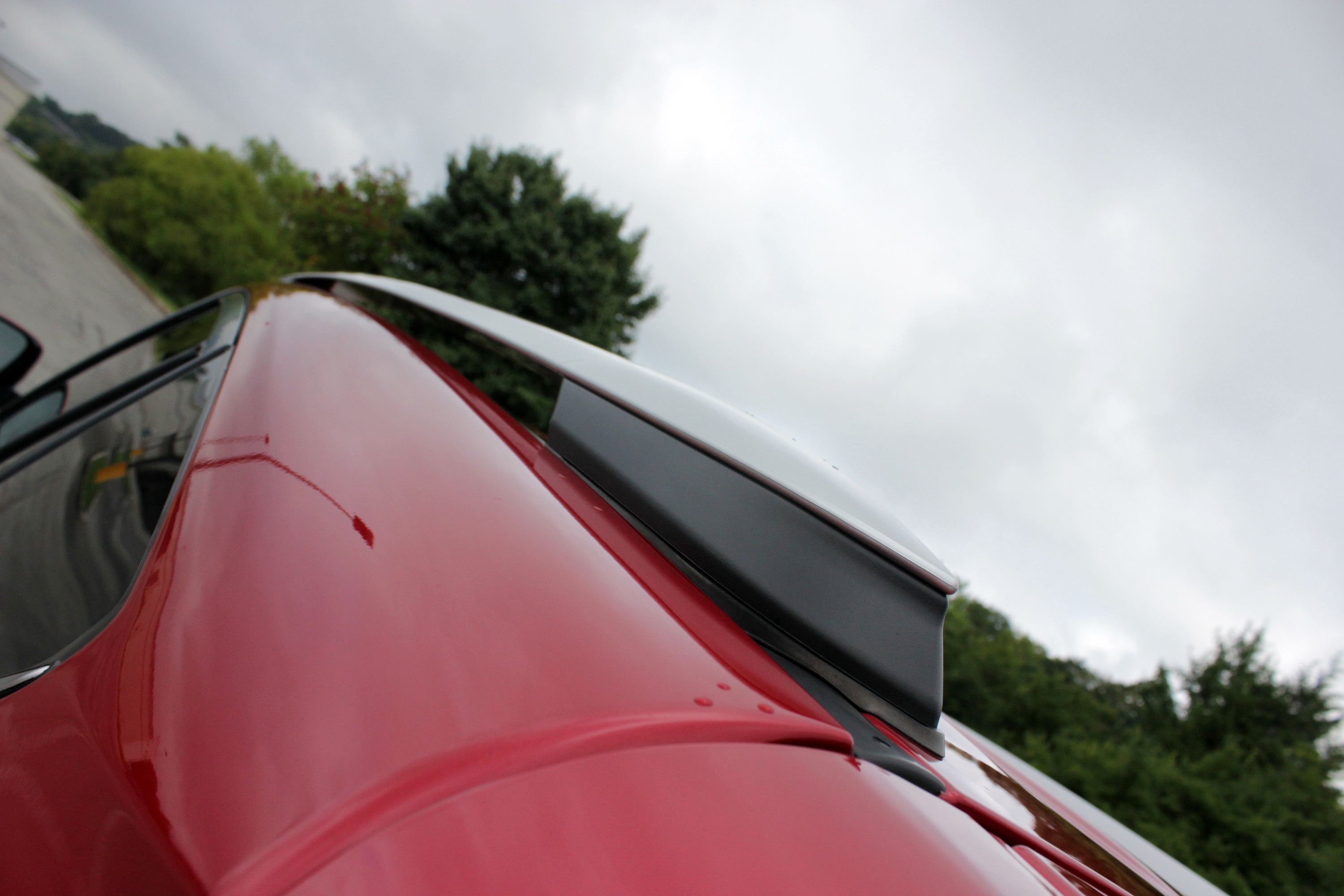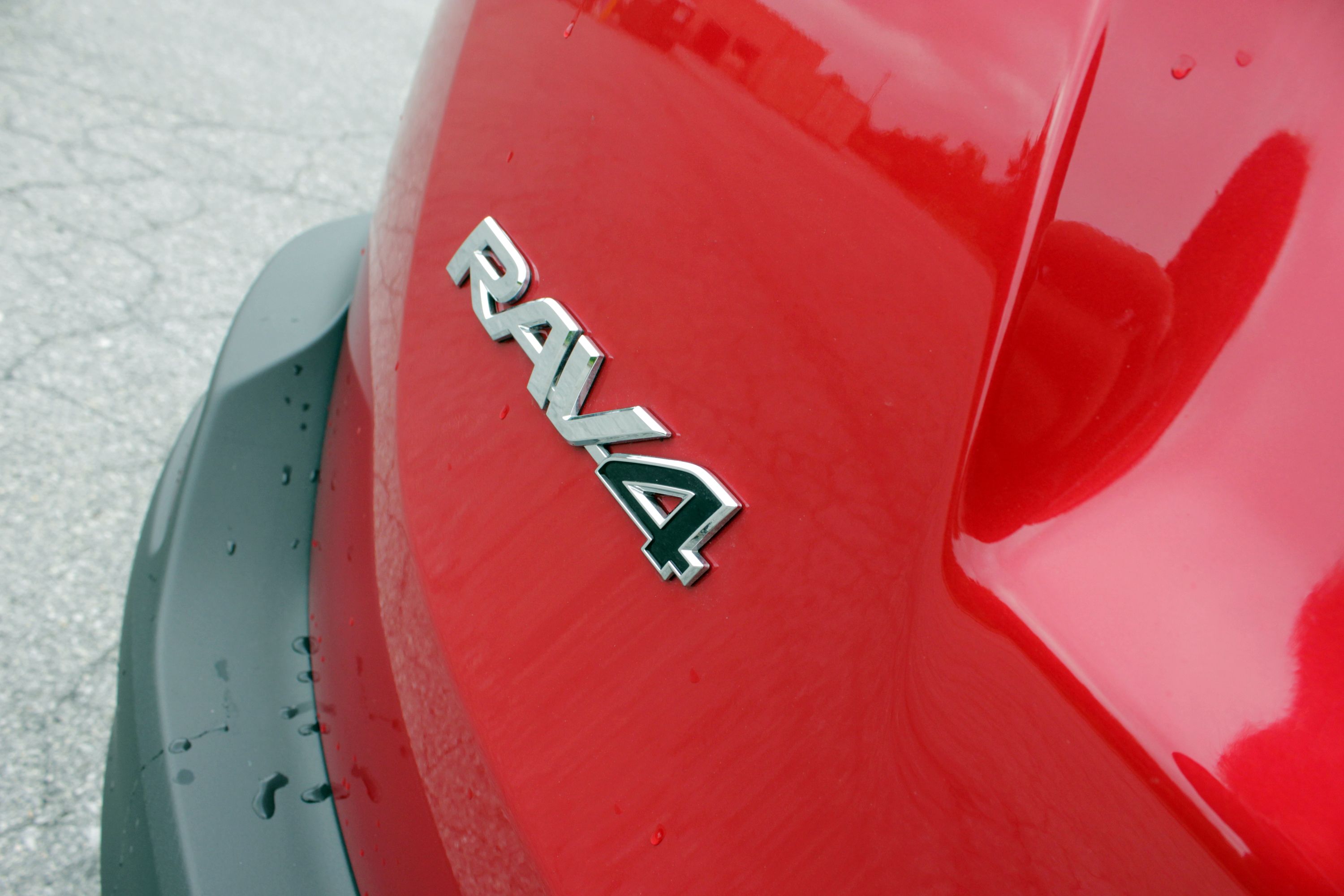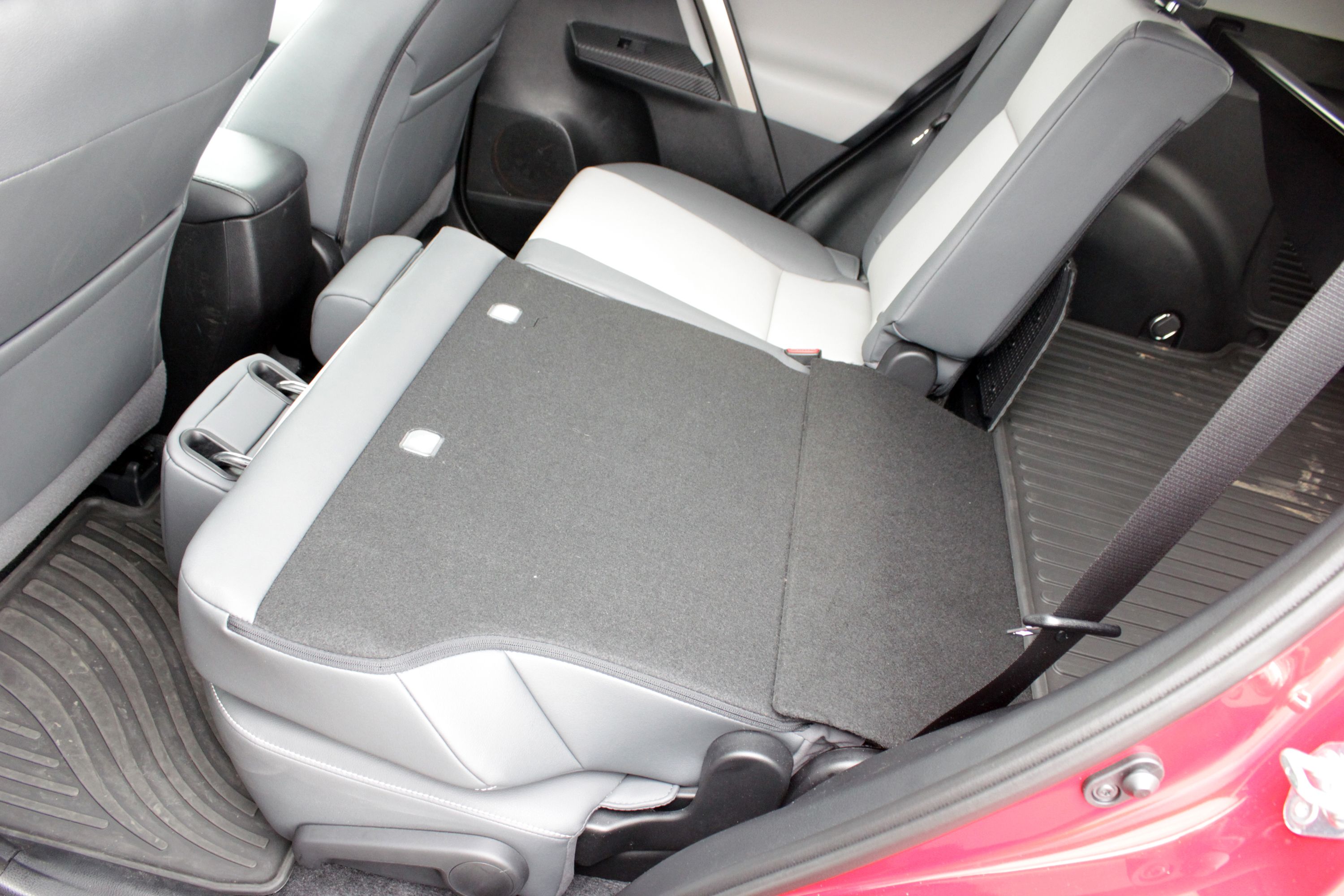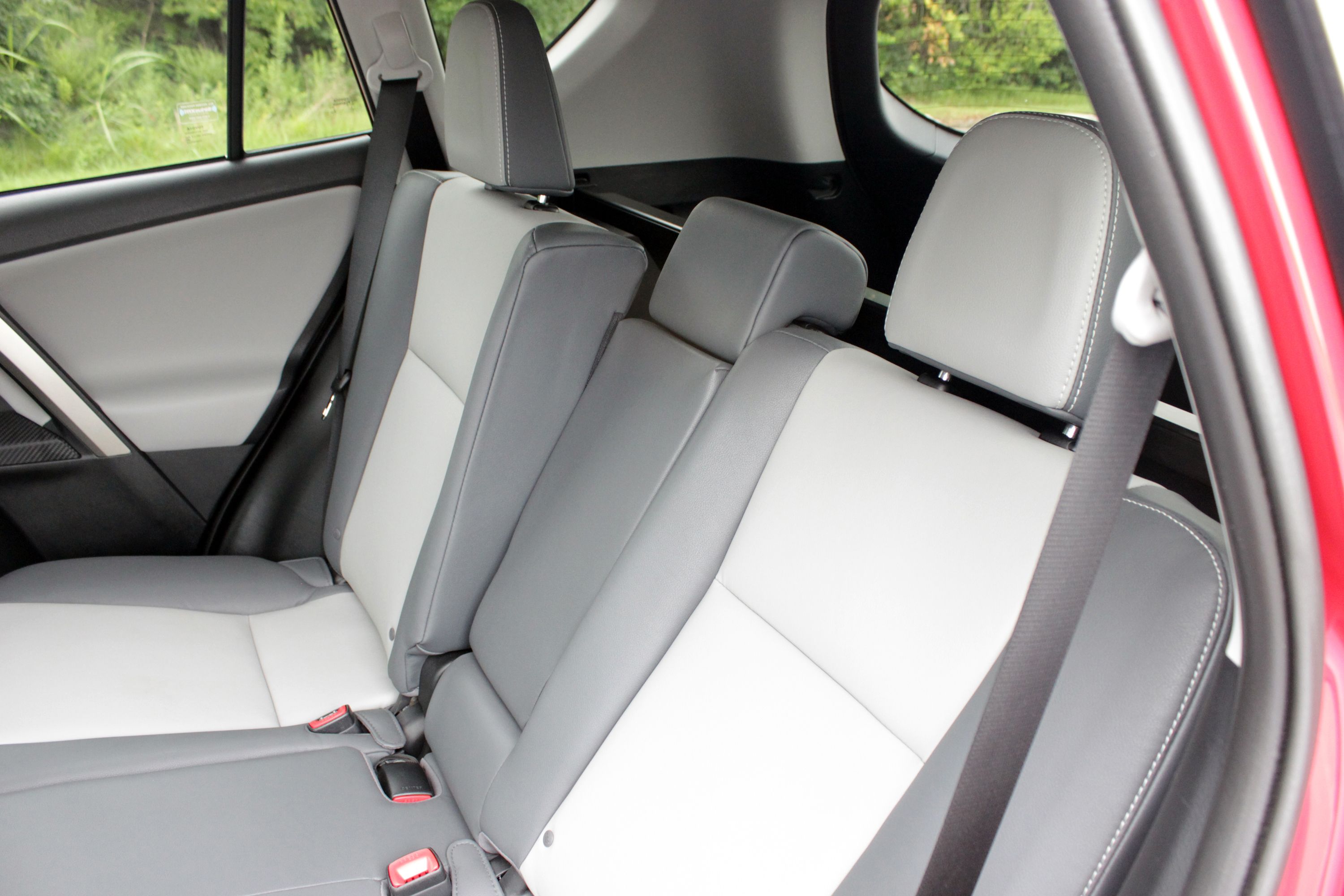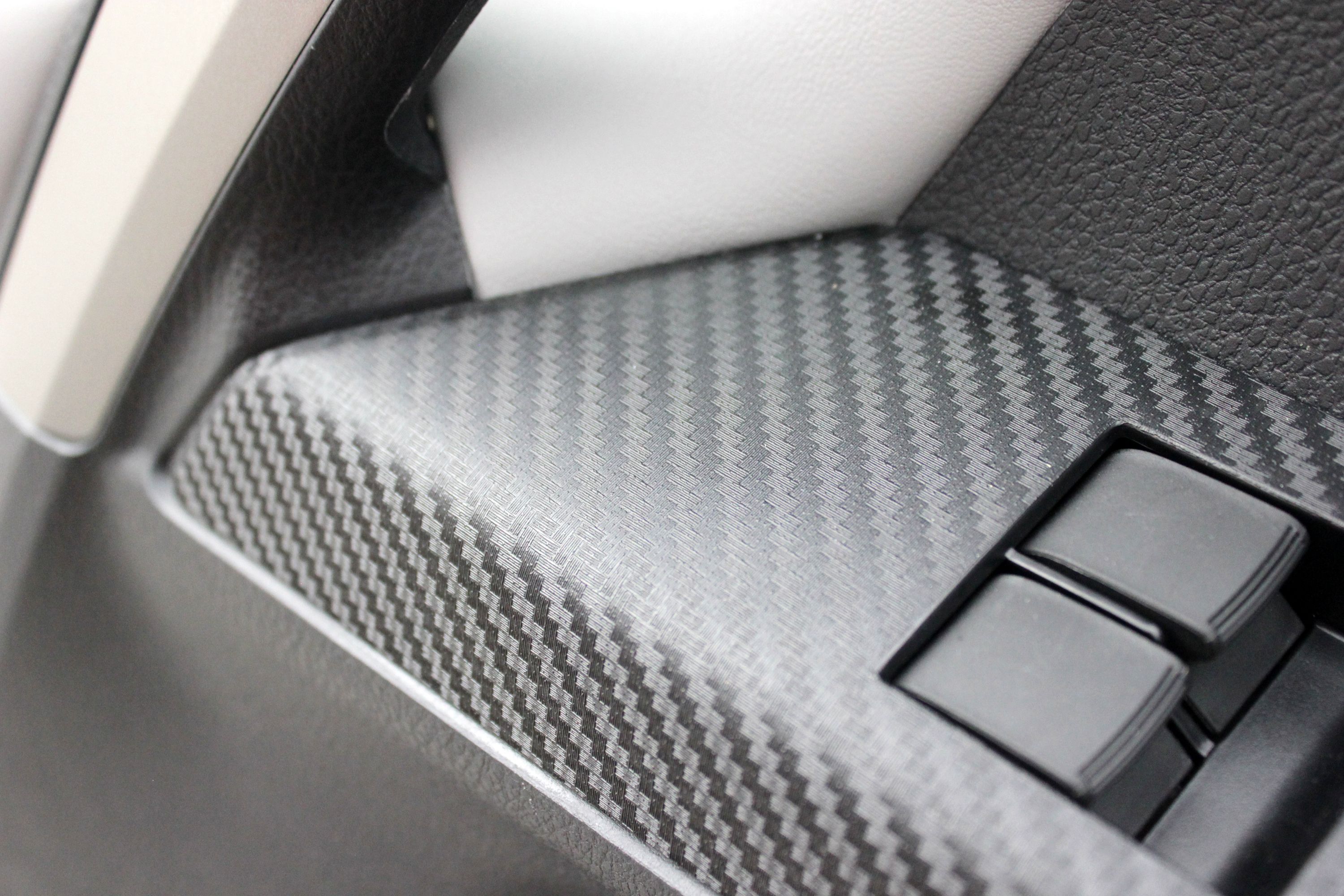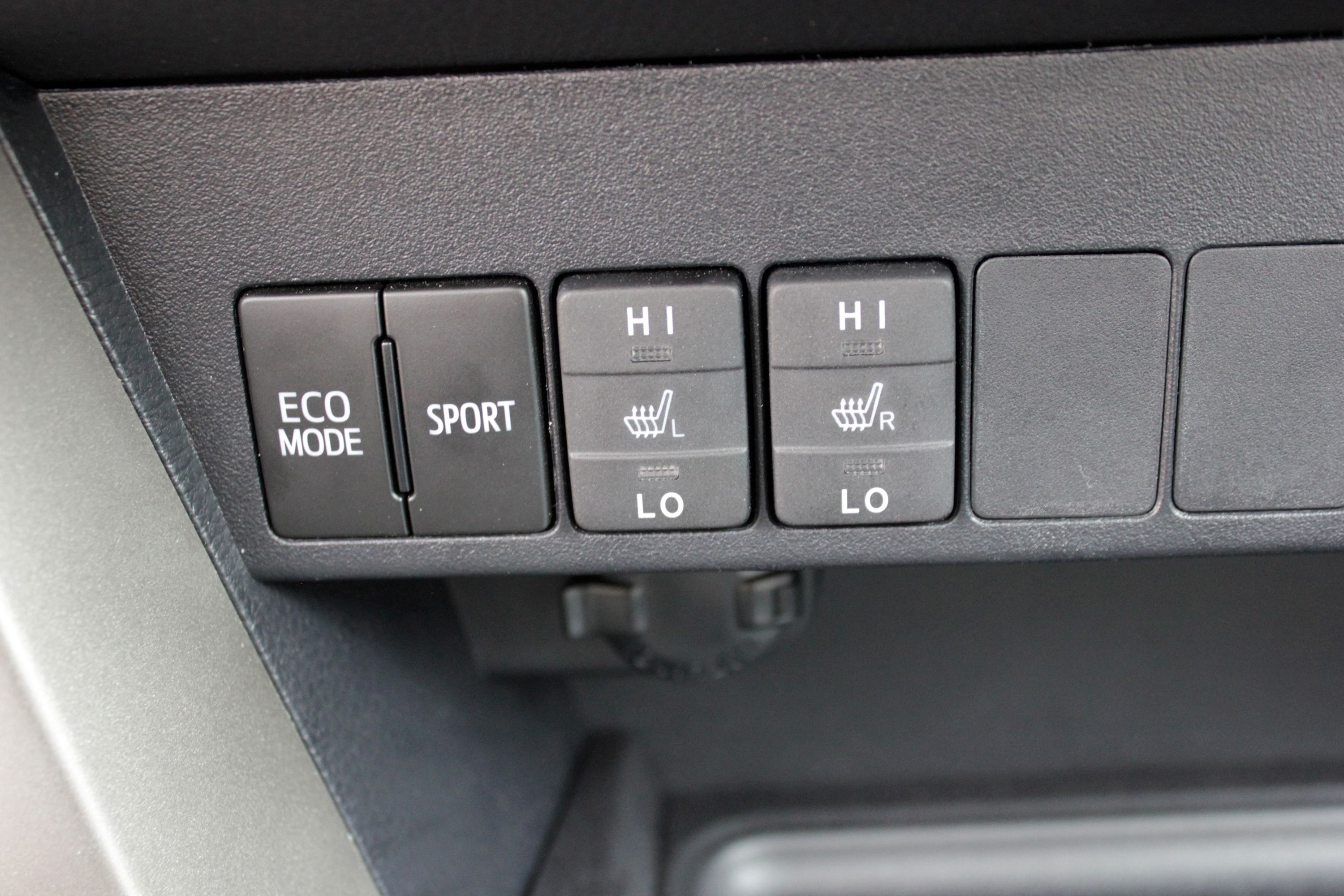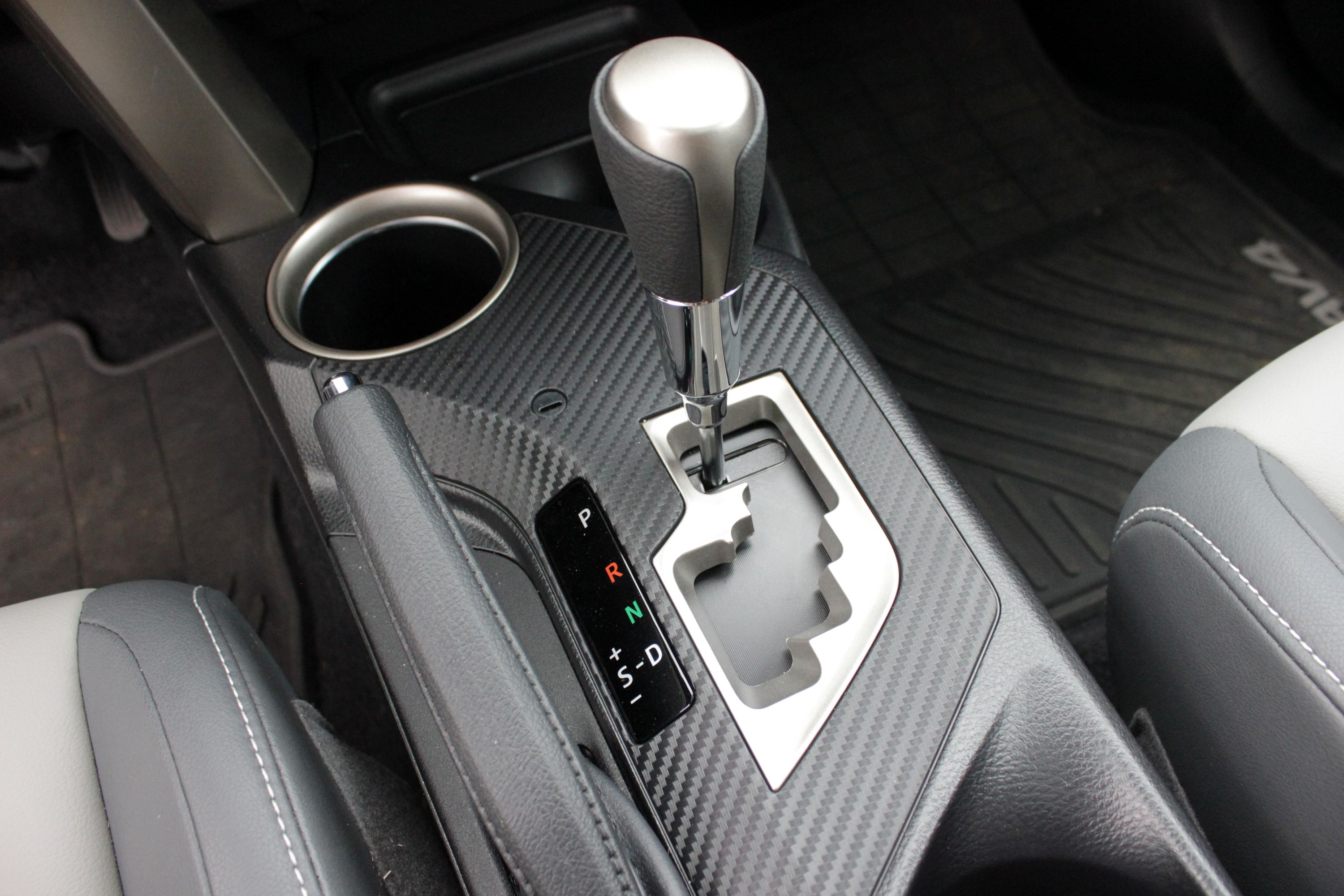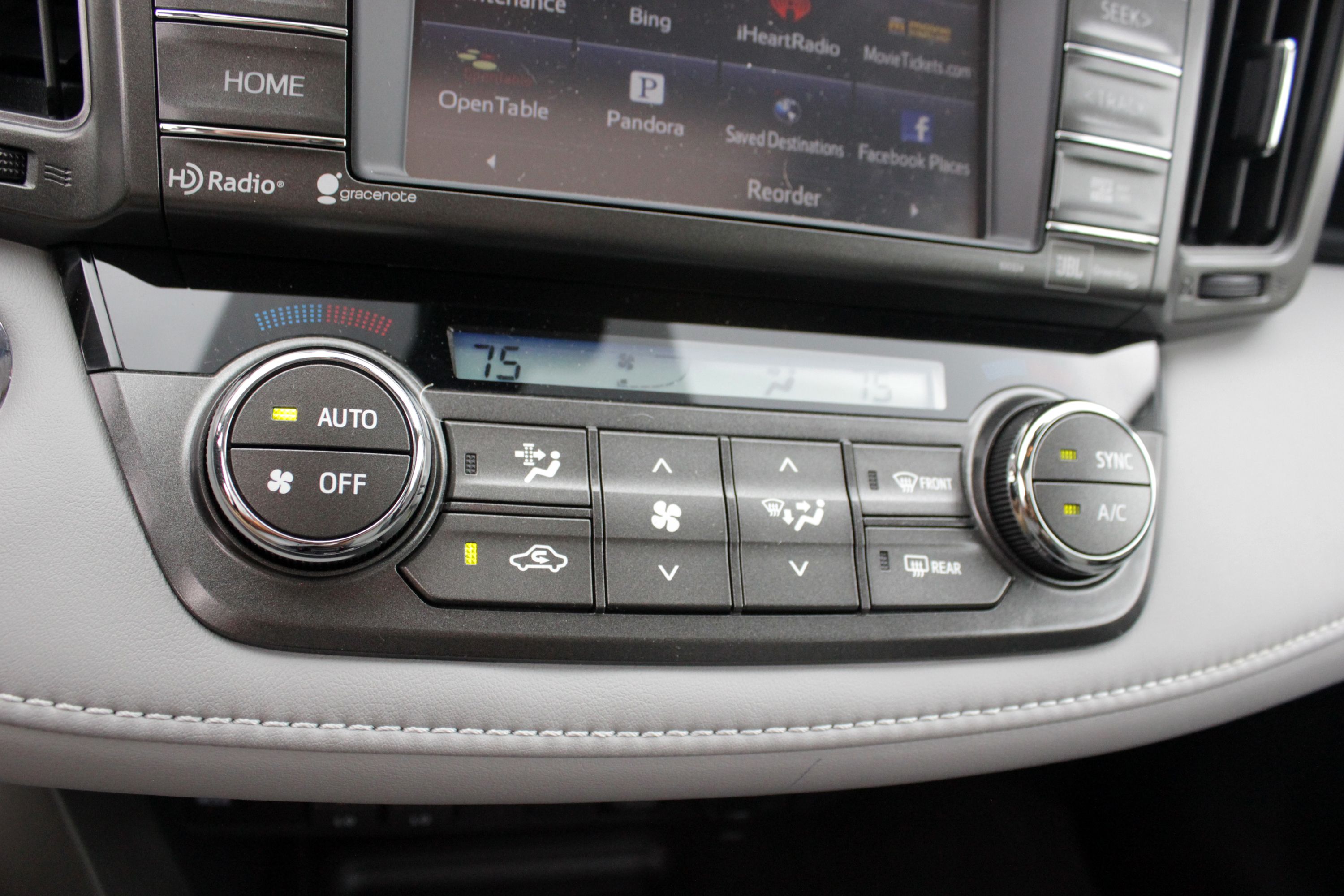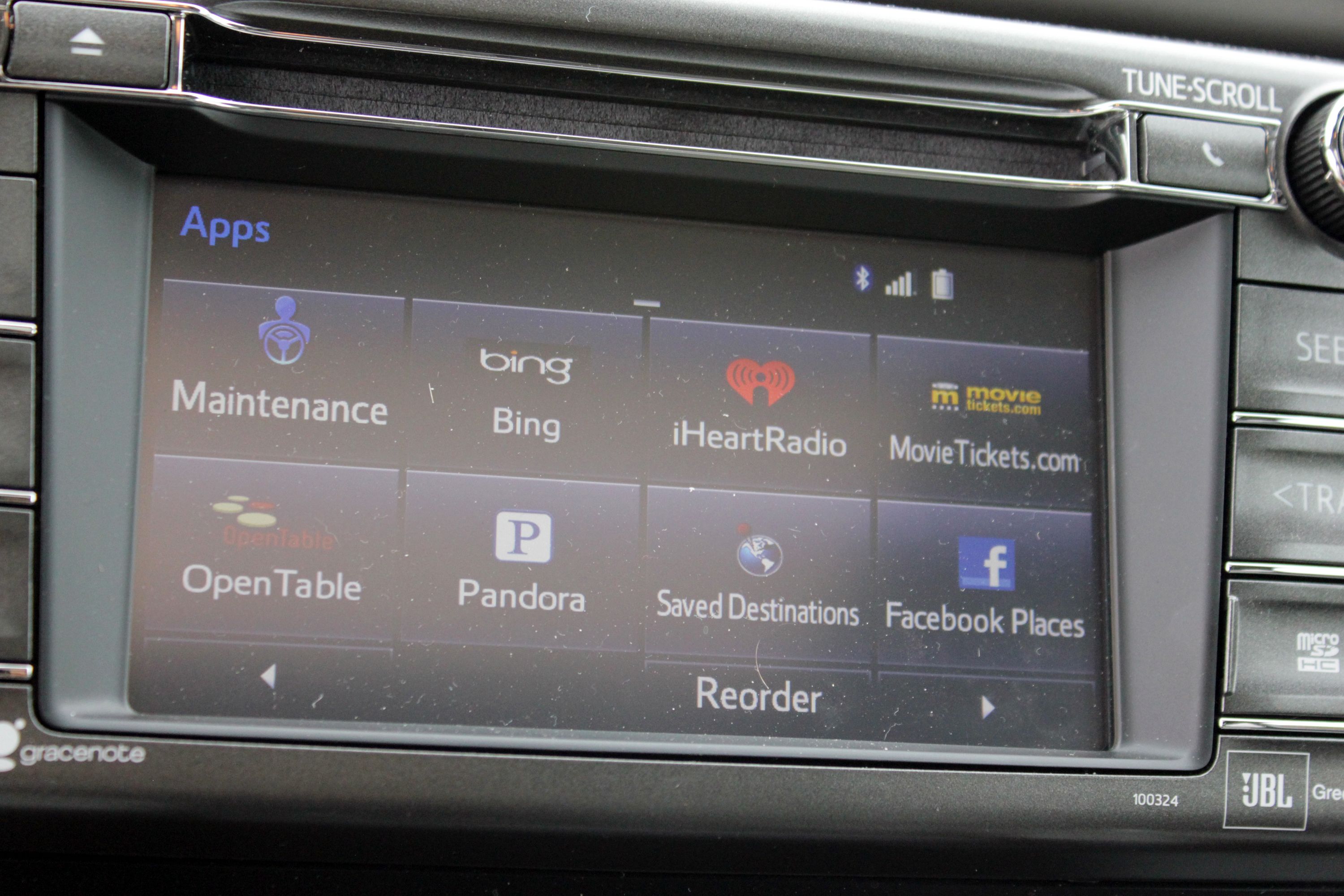In 1994, Toyota wowed the world with its new RAV4. Toyota->ke88 had brought the world a machine that possessed the size and practicality of an SUV->ke145, but it promised the driving dynamics and comfort of a car. When it went on sale in 1995, it was an instant hit, and the crossover->ke288 craze officially started. In 2014, 20 years later, the RAV4->ke370 has just moved into its fourth generation, and sales are still going strong. Over the last two decades, there have been dozens of competitors join the game, and Toyota is no longer the only kid on the block.
Is the RAV4 still the machine to buy, or has the king been dethroned by one of the many challengers. I had a 2014 RAV4 Limited with FWD for a week, and I decided I was going to do my best to figure out if this latest RAV4 is worth the badge on its bodywork, or the money in your wallet.
With a fresh exterior design, revised drivetrain options and a new interior, this is the most radical change the RAV4 has ever experienced. Read on to see if it is any good.
Continue reading to learn more about the new 2014 Toyota RAV4 Limited
2014 Toyota RAV4 - Driven
- Make: Toyota
- Model: 2014 Toyota RAV4 - Driven
- Engine/Motor: inline-4
- Transmission: 6-speed auto
- [do not use] Vehicle Model: rav4
Exterior
The new ,fourth-generation car came in 2013 and it brought a heavily revised look to the compact SUV that moves into 2014 unchanged. Gone is the traditional square profile that has defined nearly all SUVs and crossovers since their inception. It has been replaced by a sharp beak-like nose that makes the car look much lower than it is.
While the rear of the car remains fairly blocky to maintain practicality, Toyota has employed several visual tricks to make the RAV4 look smoother and swoopier. The beltline moves in a soft upward angle while the top of the windows bow down toward the rear; a sharp body crease follows the beltline, but extends slightly lower and toward the rear of the RAV4 to make it appear more elongated.
For the most part, the visual changes could be seen as successful. The new model does look far sportier than the outgoing machine, even if it is just a good visual trick.
As our model is the Limited trim level, we have some extra goodies too, like 18-inch alloy wheels, extra chrome trim and a rear spoiler.

Interior
The Inside of the RAV4 is one of the key reasons this car will find a home in thousands and thousands of garages this year. Starting with the driver’s cockpit, the RAV4 has been very intelligently designed to be practical and attractive without feeling overdone or excessive. The instrument cluster is a simple design with three large gauges for speed, rpm and fuel. Inside the bottom of the speedo is a small LCD that can be configured to display a variety of ancillary information.
More than just the main gauges, the rest of the frequently used controls are well laid out and simple to use as well. The climate control system is operated using a small set of large knobs and switches that are easy to locate without looking. The stereo is Toyota’s Entune unit and it features just a trio of large and easy-to-see buttons on either side of the screen. Again, Toyota has given me a car with navigation that has no navigation button, but if you bring the car into the “home” mode, the navigation map is part of the default setting so you can easily access it.
As a top-level car, all the seats and large parts of the dash were covered in a faux-leather material that was surprisingly soft and supple. You won’t really fool anyone into thinking its real animal hide, but it is one of the better facsimiles I have had the pleasure of touching. The leather also comes in two colors for our tester, gray and black. The entire cabin is a combination of gray surfaces and black surfaces that meld well together to create a single cohesive feel. It is actually very nice to look at. Even the dash has padded leather in grey to match the inserts on the door panels.
The interior may look nice, but the build quality is not as high as what we have come to expect from Toyota. The majority of the interior trim feels far cheaper than it should, and certain design elements like the sculptural dash flex quite dramatically under a relatively small amount of pressure.



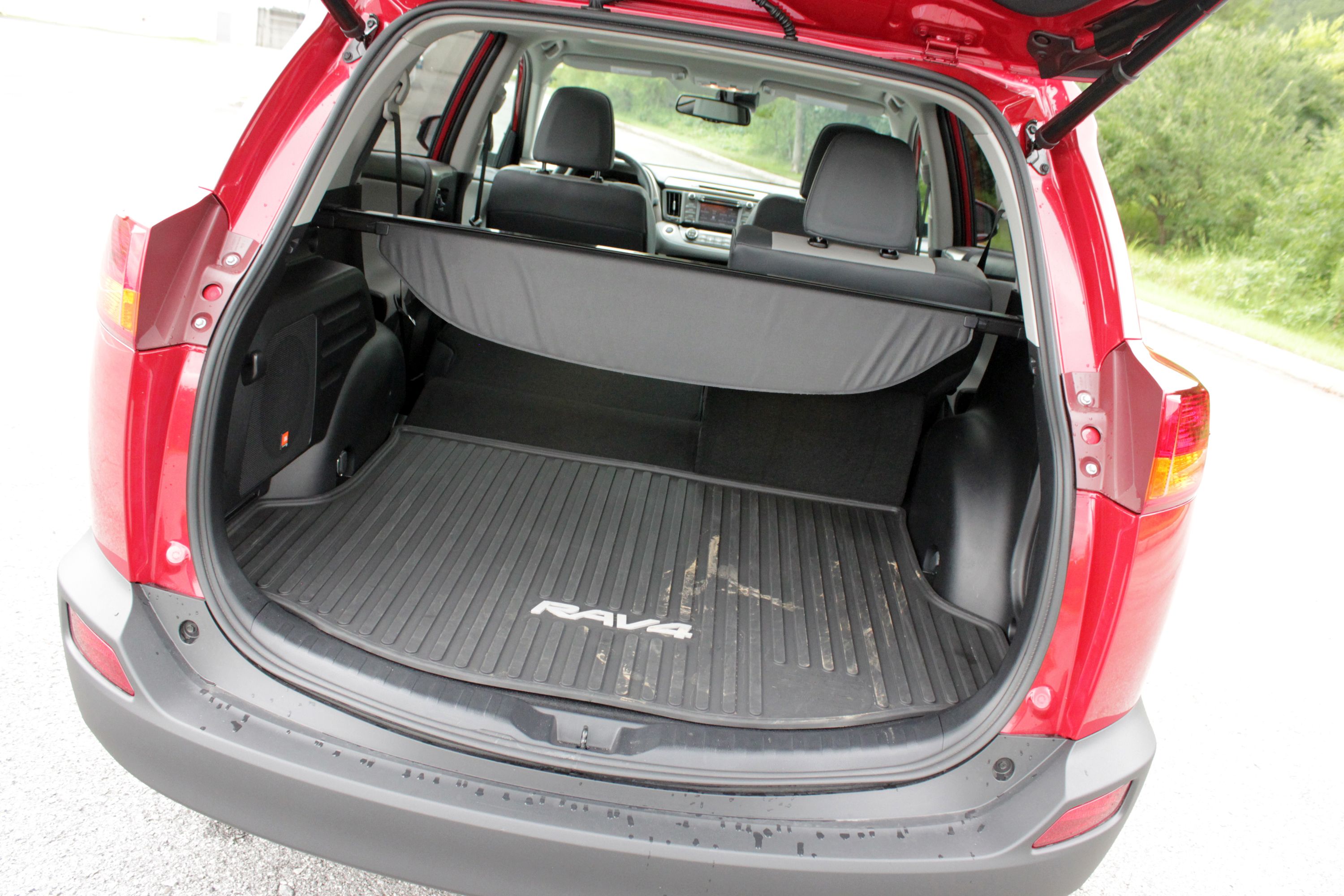


Drivetrain
Since it was first revealed, the RAV4 has had an option for a V-6 engine and AWD, but now Toyota has cut six-cylinder power from the lineup completely, leaving nothing but four-cylinders. No, before you ask, they are not fancy turbocharged motors like Ford’s Ecoboost, just regular old, naturally aspirated units. There are some smaller-displacement engines and diesel units available across Europe and Asia, but every American RAV4 comes equipped with Toyota’s seemingly ancient 2.5-liter four-cylinder. This is the same engine that is found in the base level Camry sedan.
It is a dual overhead cam engine with variable timing, so it does produce some decent power numbers of 176 horsepower and 172 pound-feet of torque. Unfortunately, that peak horsepower doesn’t arrive until 6,000 rpm and the torque doesn’t come on full until 4,100 rpm. The standard six-speed automatic transmission has fairly widely spaced gears to help with fuel economy, but that means that when you want to initiate a passing maneuver you need to wait for the car to downshift at least two, sometimes three gears.
With the exception of first gear, I just always found myself wishing for more power. The car just always felt sluggish.
The upside however, is that fuel economy is higher than expected. The sticker claims 24 city, 31 highway and 26 combined. I managed to finish the week with 29.5 showing on the clock. That was with what was probably close to a 70-30 highway-city driving split.
Brakes and Suspension
The engine of the RAV4 is potent enough to get it placed, even if the gearing is a bit wide in the transmission. If you want to find the real weak point of the machine, show it a steep downward grade or a set of turns.
The suspension setup is fairly sophisticated with its MacPherson struts up front and dual wishbone rear with coil springs, but the entire setup is designed for comfort above all. If you throw it into a turn, the car will sway much more dramatically than you expect, and with that weight transfer comes an incessant habit of terminal understeer. Obviously, this isn’t made to drive like a sports car, but there are other SUVs that have managed some decent handling traits. I just expected a little more from the RAV4 considering its relatively high-end underpinnings.
The brakes are the real downside to this machine though. This RAV4 had less than 4,000 miles on it when it arrived at my house, but the brakes feel worn out. Pedal travel is long and soft. It almost feels as though you are stepping into a memory foam mattress. It progressively builds pressure, but your foot sinks much farther than you anticipated. The brakes also just don’t perform very well in normal driving. I constantly found myself in a slight panic as I realized I was not stopping as fast as I expected. Then on my way out of the local mountains, I started to get noticeable brake fade, and you could smell the hot pads in the cabin. That experience didn’t exactly fill me with confidence.
If you do nothing but urban driving, and don’t tackle very many grades, it may just be fine for you, but it is under par for what I would expect from any car designed to haul families.
Price
The Toyota RAV4 starts at a base price of just $23,550. A few thousand higher than competitors, but you get more standard equipment so it evens out. Our car was the Limited trim, the highest level you can order at it carried a base sticker price of $28,320. The Entune Premium JBL audio system upgrade was $785, and we had a $725 Technology Package which adds things like blind spot monitoring lane departure alert and auto high beams.
Considering what some options cost, those packages seem like relative bargains. The only other options on our tester included a $200 all-weather mat kit, a $49
cargo net and a $359 VIP RS3200 Plus Security System upgrade. All in, after the $860 destination charge, our RAV4 carried a final price of $31,298.
Driving Impressions
As I mentioned in the Drivetrain and Brakes and Suspension sections, driving the RAV4 has its ups and its downs. On one hand you find yourself sitting in what is a very attractive cabin, and you are making your way down the highway in relative comfort while just barely sipping any fuel. In this context, the RAV4 makes a lot of sense. I even loaded it with five people, and while the three in the back where a bit cramped, I got no major complaints about ride quality.
I will say that putting five full-grown adults in a car with less than 200 horsepower caused a noticeable drop in performance, especially when I was trying to merge onto the interstate.
While driving, all the controls are in easy reach, and it was quick and painless to adjust the air condition without looking down from the road, and the steering wheels controls made managing the radio a breeze. It felt like any normal car. Not exceptional in any way, but competent.
Sadly, once I leave town and head towards my home in the hills, it all starts to fall apart a bit. The soft suspension allows the car to move enough that my wife gets uncomfortable on the twisty country roads, and the lack of brake pressure keeps catching me off guard as I try to scrub speed for coming turns or four-way stops.
If you are the right kind of driver, and if you are looking to buy a RAV4 in the first place I suspect you are, then this little Toyota CUV may be all you really need or want in a car. It’s just not the right vehicle for me.
Competition
Mazda CX-5
If I was looking to get a small crossover, I would very likely look toward the Mazda CX-5. It has a great looking exterior design, sporty chassis design, and thanks to its lightweight Skyactiv technologies, it feels quick, handles great, and gets excellent fuel economy.
There are two engine choices for picky buyers, a 2.0-liter with 155 horsepower that promises 35 mpg, or a 2.5-liter with 186 horsepower for those who prefer speed. If you prefer to row-your-own gears, you can get the 2.0 with a six-speed manual.
The RAV4 and CX-5 are nearly identical in exterior size, but the CX-5 has a longer wheelbase that helps improve handling. Despite their similar size, the 2.0-liter equipped CX-5 has a 200+ pound weight advantage over the lightest RAV4.
There isn’t much to split them with over price either. The base CX-5 is much cheaper than the RAV4, but it has less standard equipment. At the high end, there is only a few hundred dollars between them.

Honda CR-V
The Honda CR-V has been the arch-rival of the Toyota RAV4 sine they were both introduced to the American market in 1995. Every year the sales crown is a tight fight between these two Japanese behemoths.
The current CR-V is getting to be a little long in the tooth, and compared to the recently refreshed RAV4, it can struggle. It has a 185-horsepower, 2.4-liter, four-cylinder engine, better than the RAV4, but its torque rating is only 162 pound-feet. It also falls slightly behind the RAV4 in fuel economy, having a rating of one mpg less in both city and combined driving.
From a size standpoint, the CR-V is slightly smaller in most every dimension, meaning it has slightly less cargo and interior space. It doesn’t really seem like the CR-V is much of a competitor to the RAV4 after all, but that will likely change very soon. Coming next year is an all-new CR-V that Honda promises will be better in every way. If the current car is already ancient, and the RAV4 can only just best it in most categories, it seems the new CR-V may be one of the best small CUVs to hit the market in some time.

Conclusion
My time with the Toyota RAV4 left me with some pretty mixed feelings. In certain situations, it was a great car. It has plenty of space for people and cargo, it is comfortable to sit in for longer highway trips, and it was more fuel efficient than I ever expected it to be. Still, my qualms about the performance leave me feeling cold and detached. I would not a buy a car that felt this underpowered most of the time. Yes there is a sport button, but it makes the throttle twitchy and the car still has to shift to produce power so you are playing a constant game of downshifting for speed, and immediately upshifting again for better fuel economy. For most people who are looking for something to ferry kids to soccer practice with, this will be a great car. For my money, I would rather have something a little more fun.

